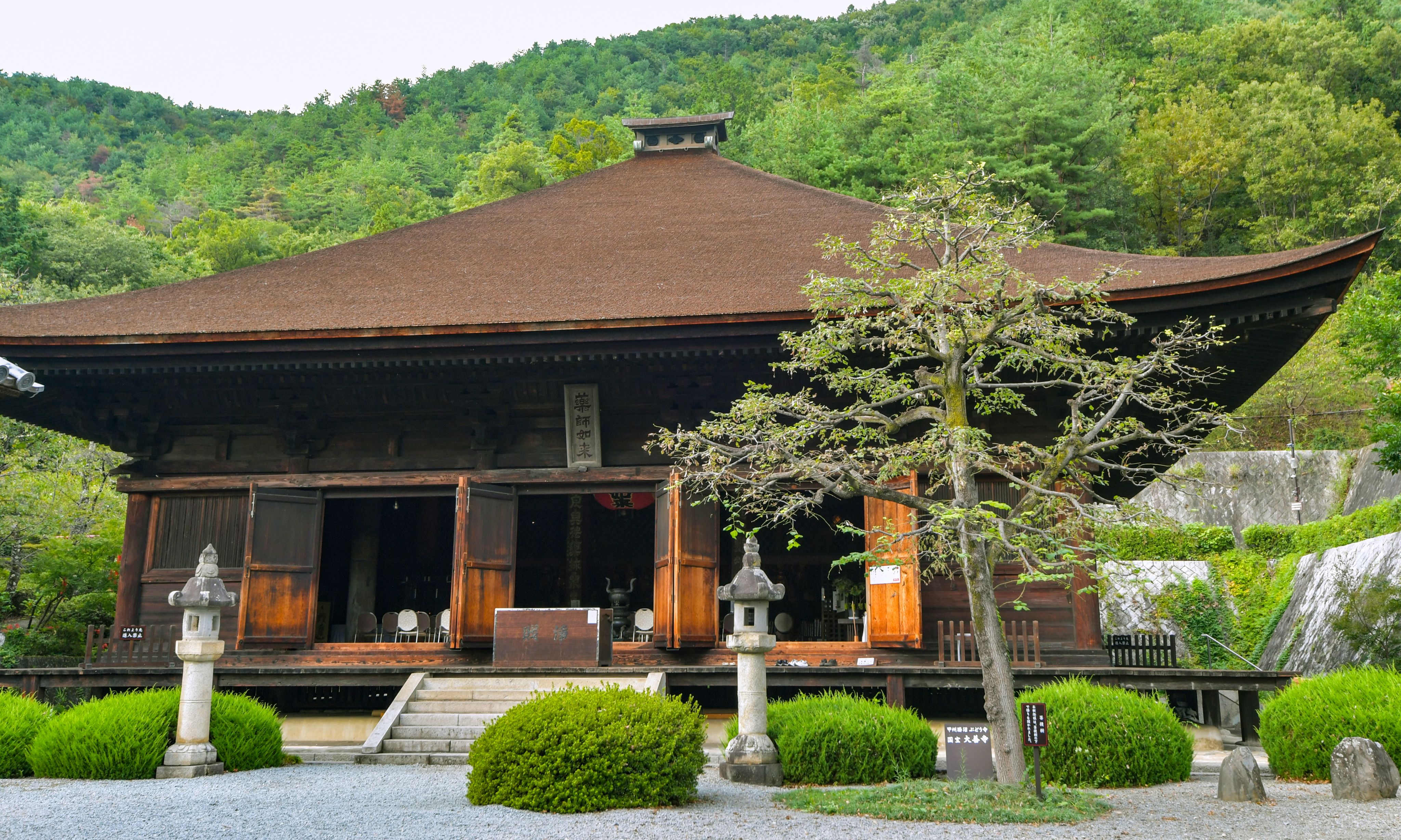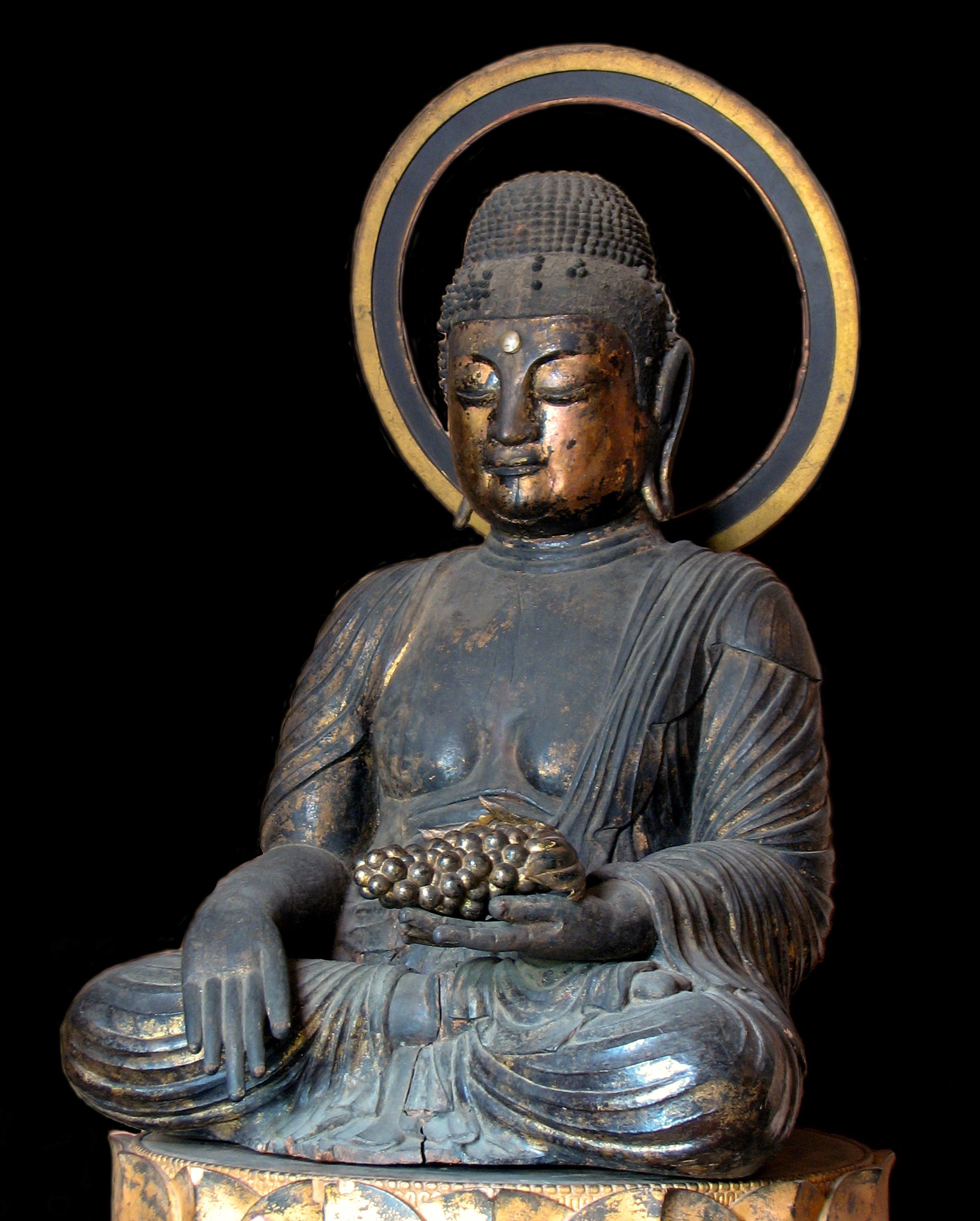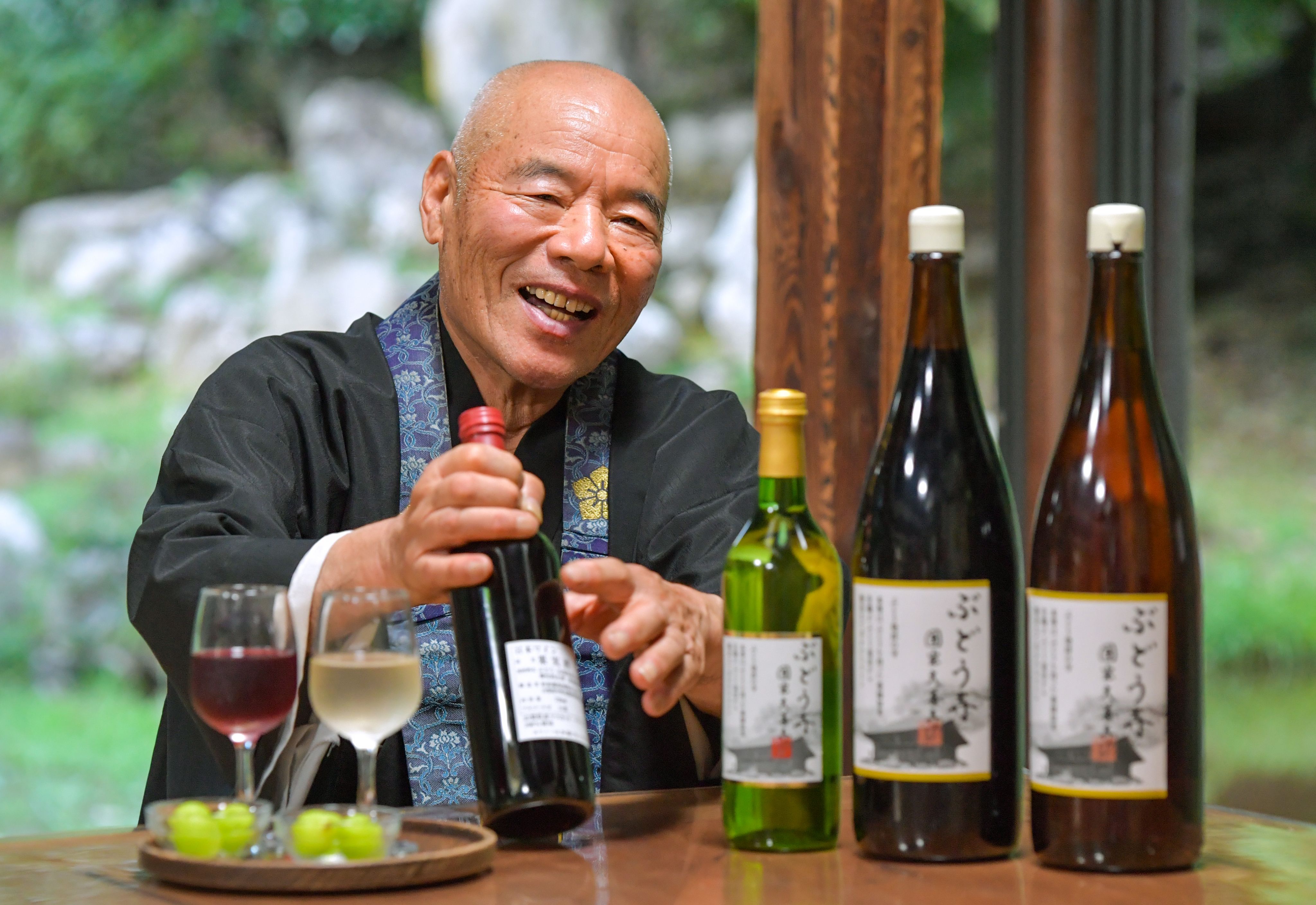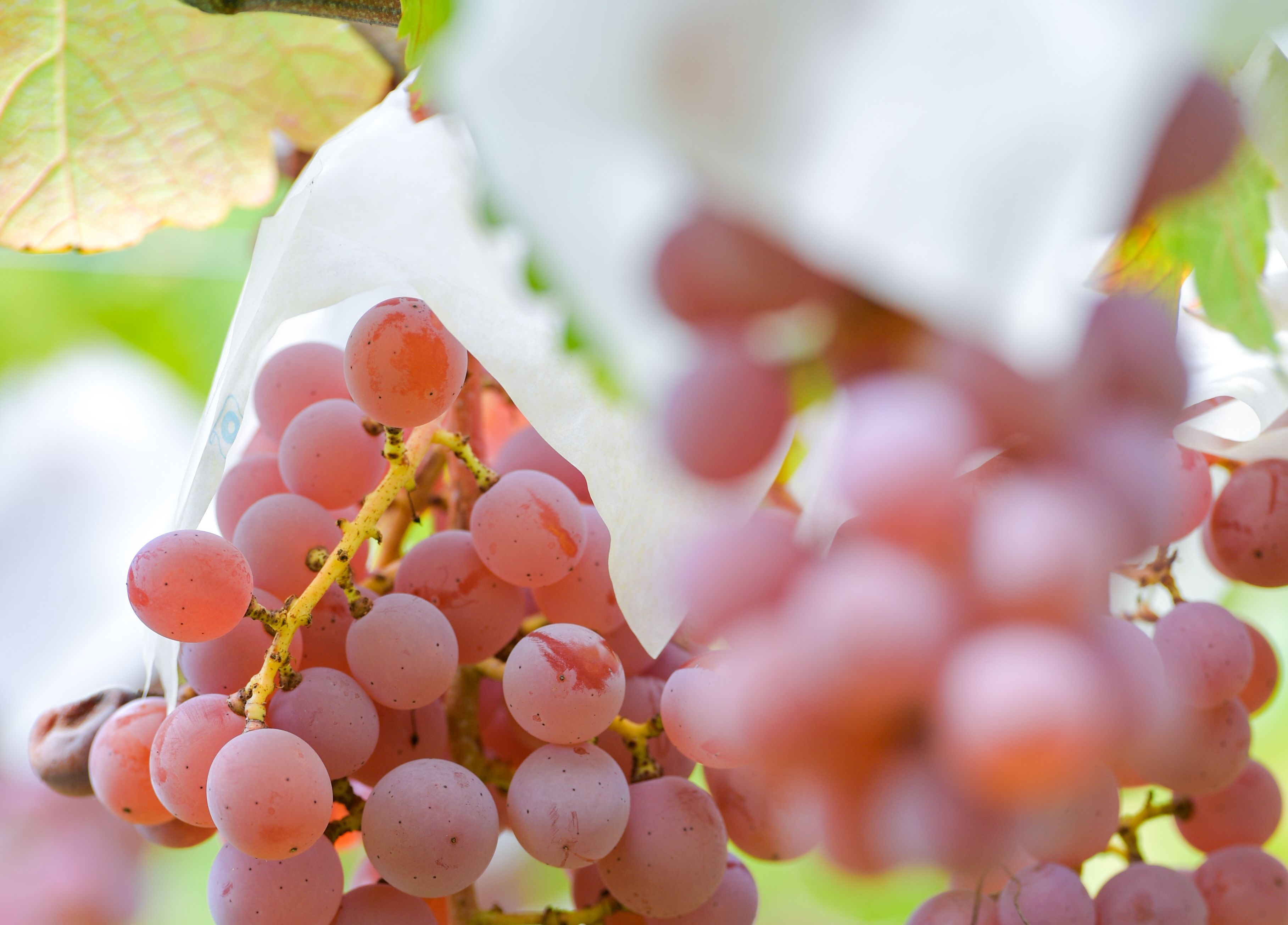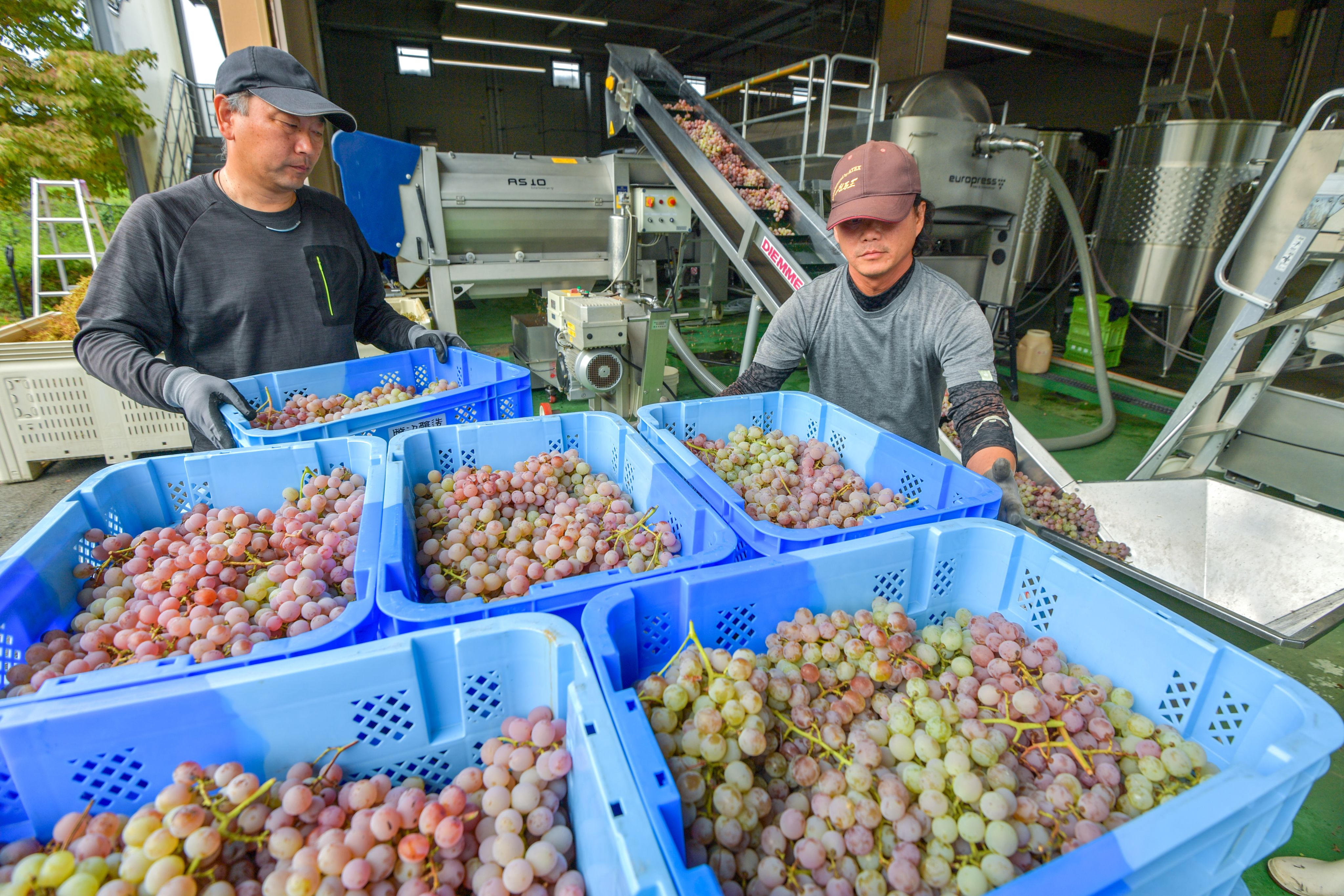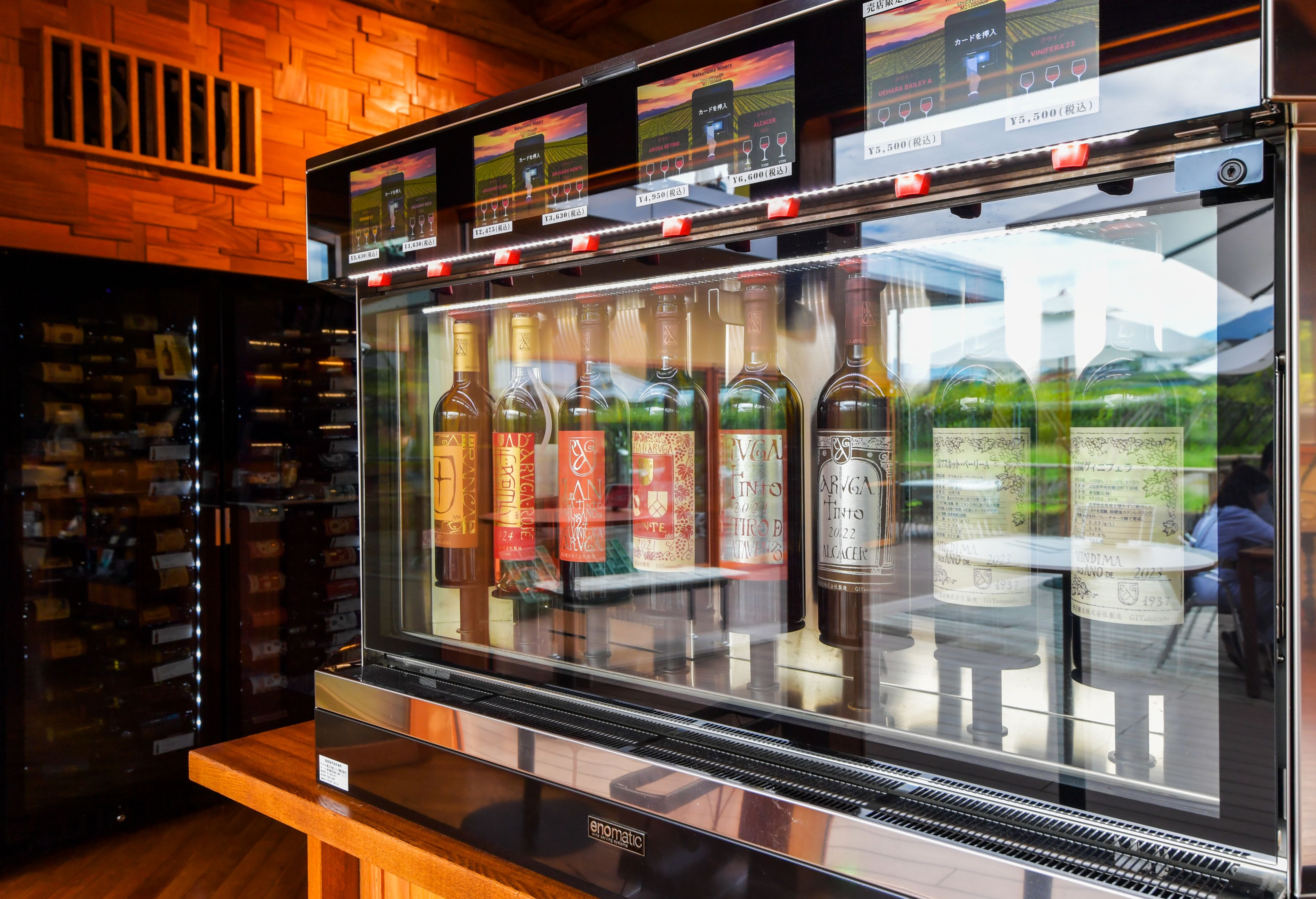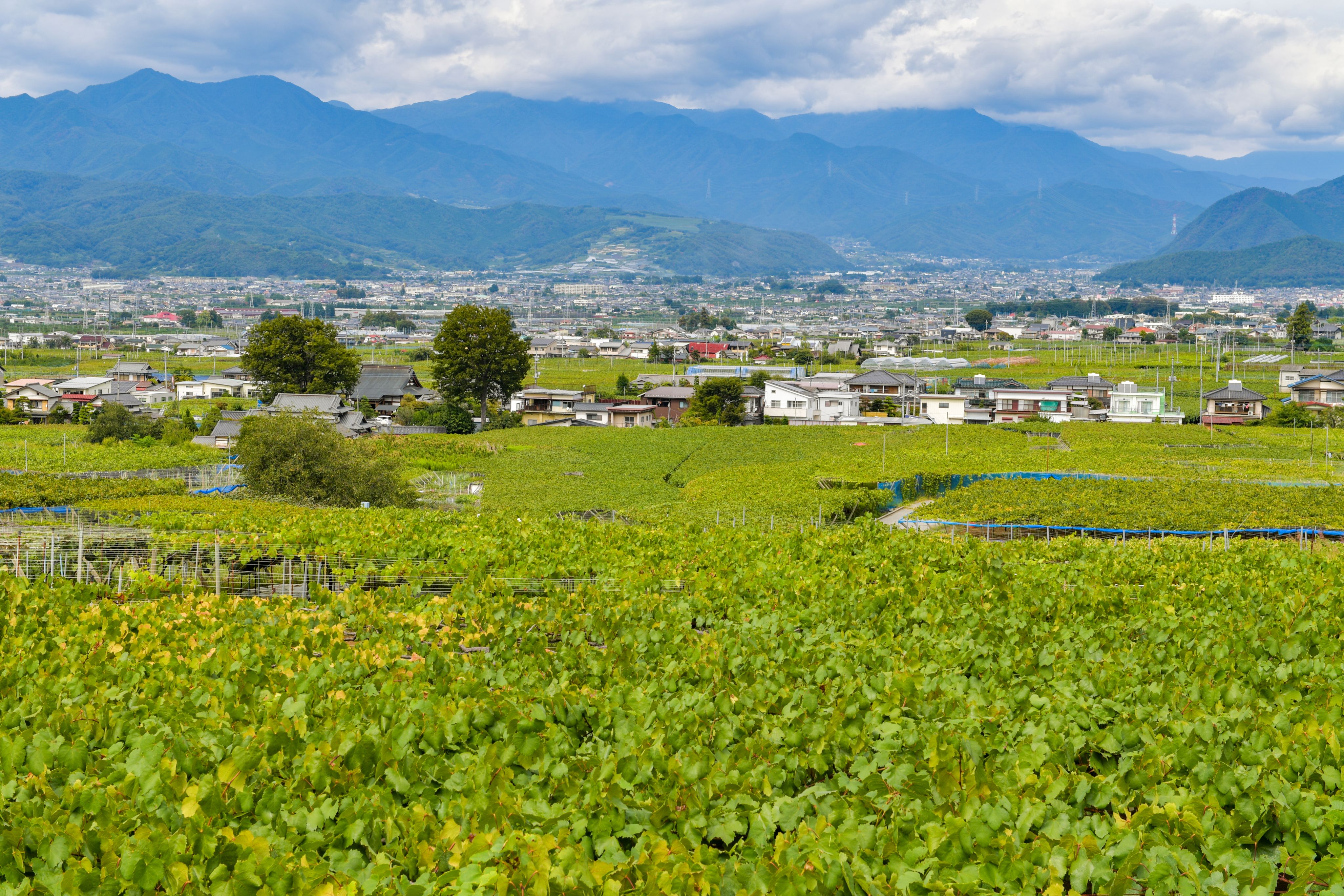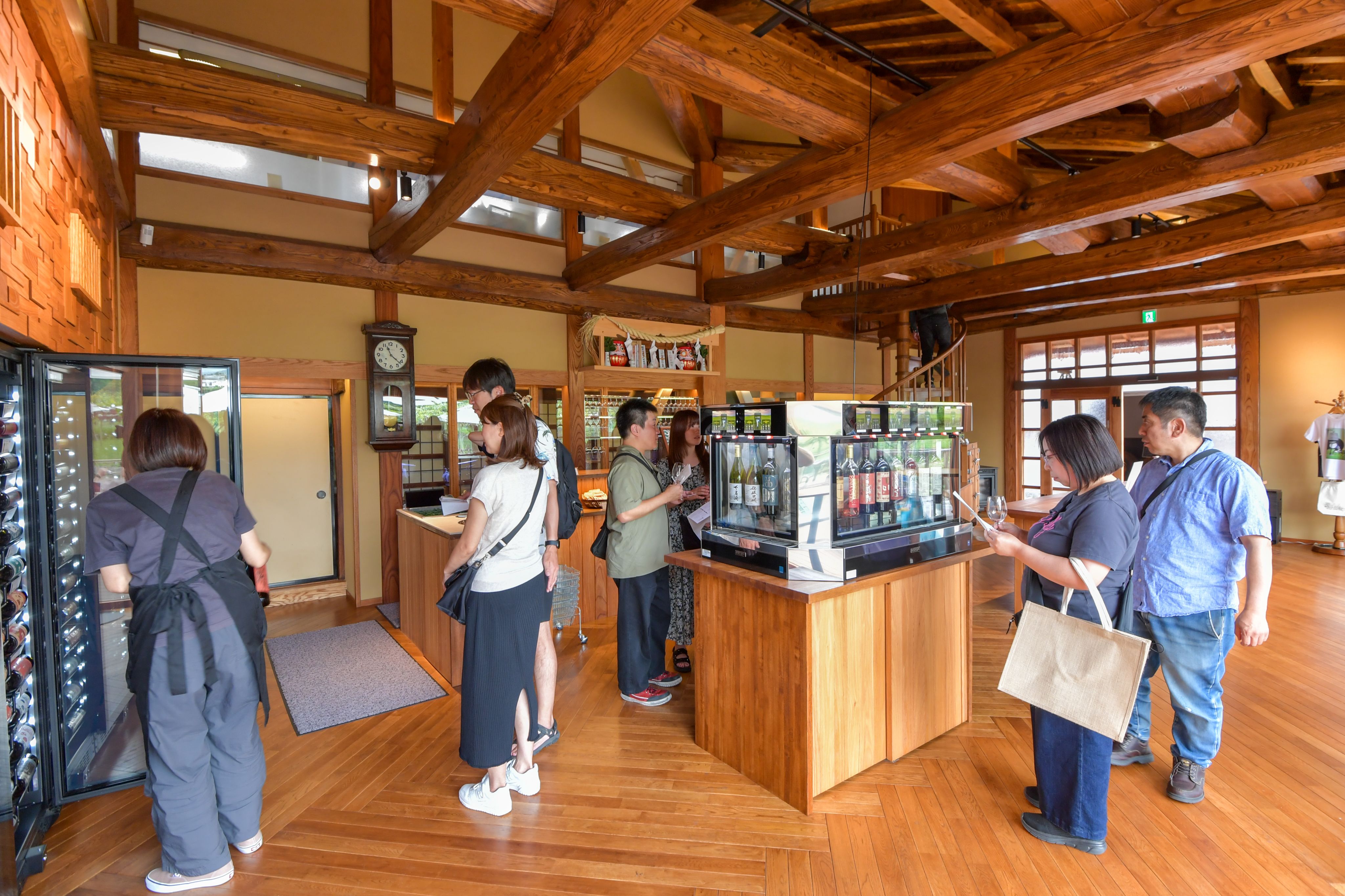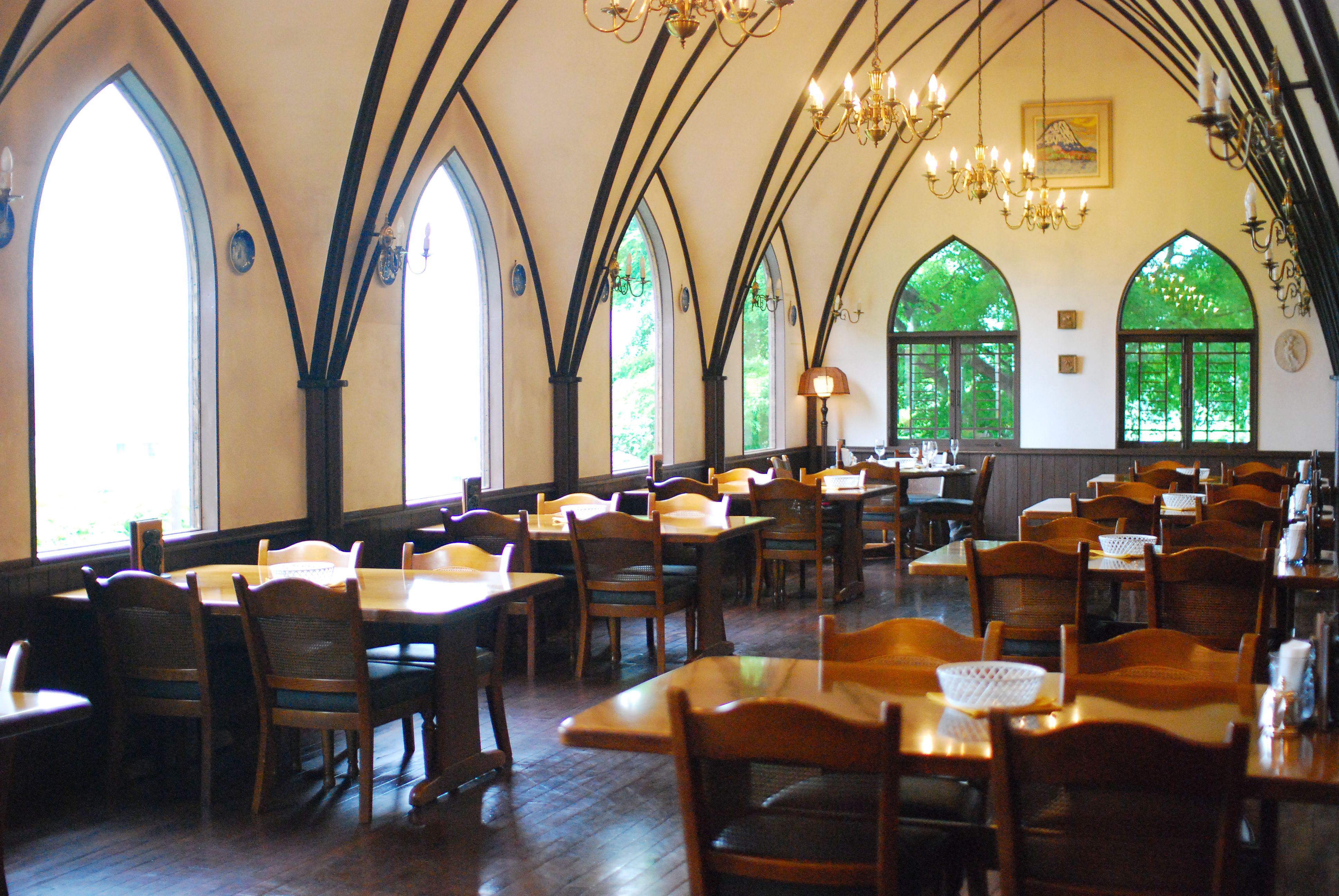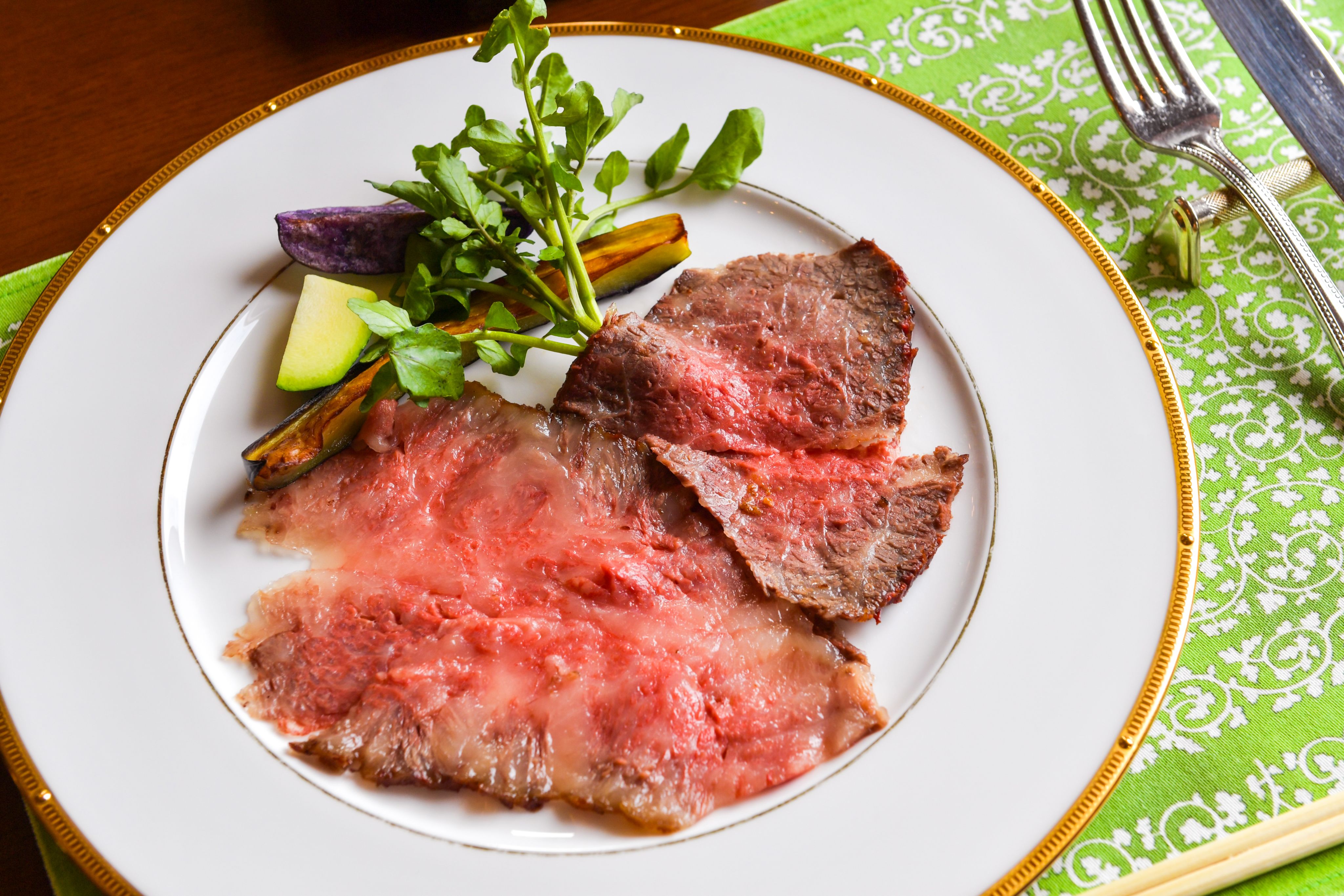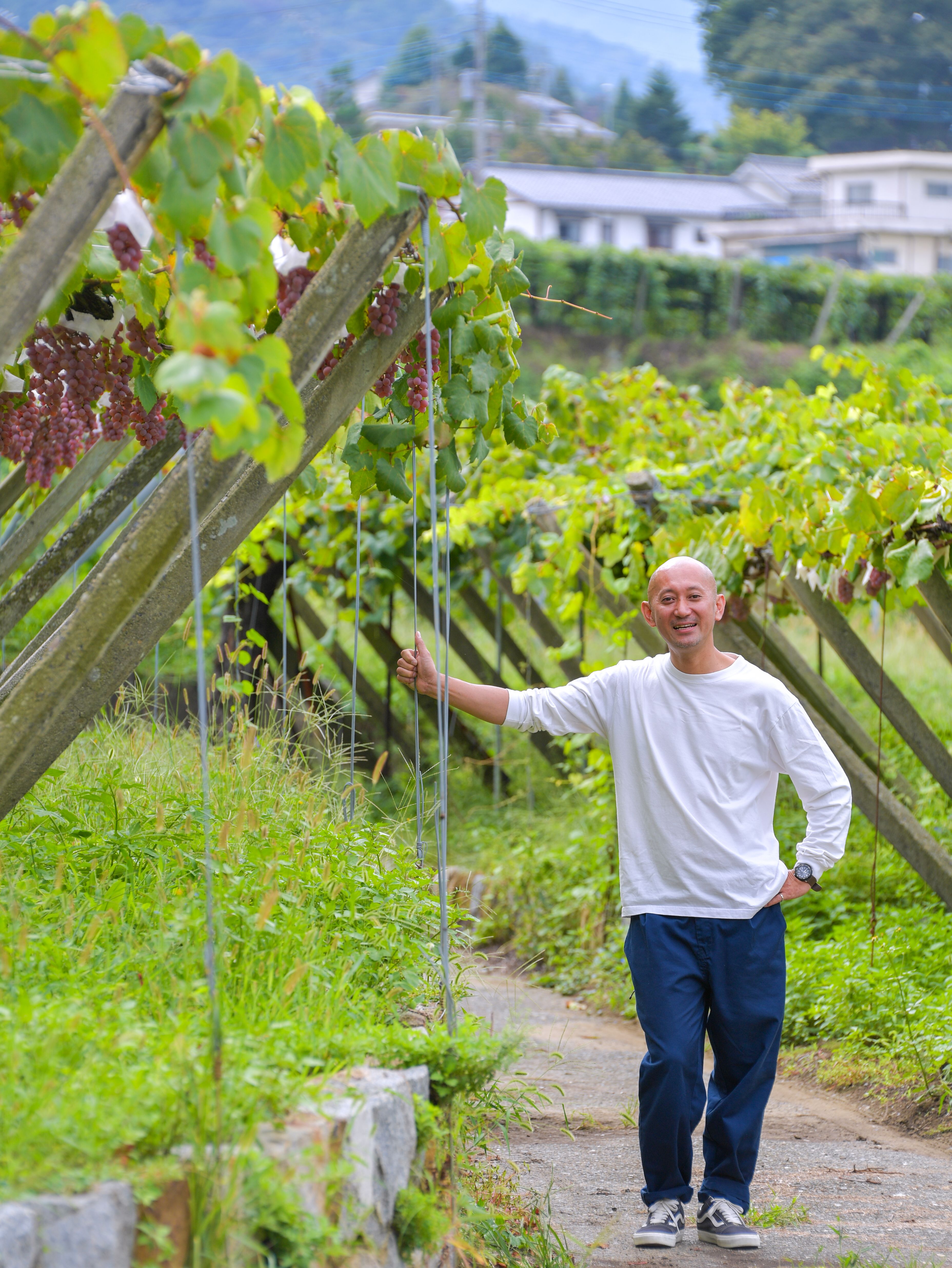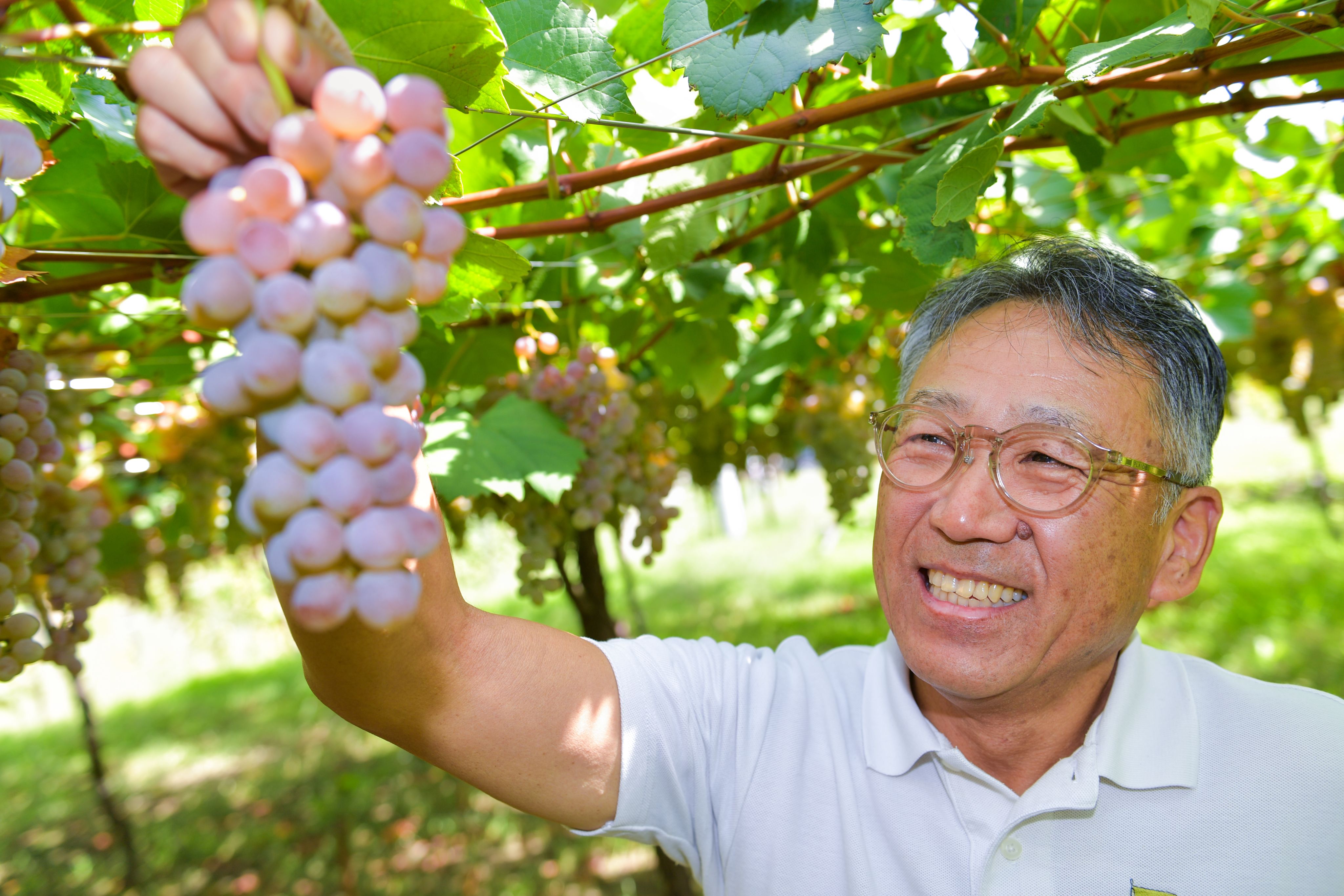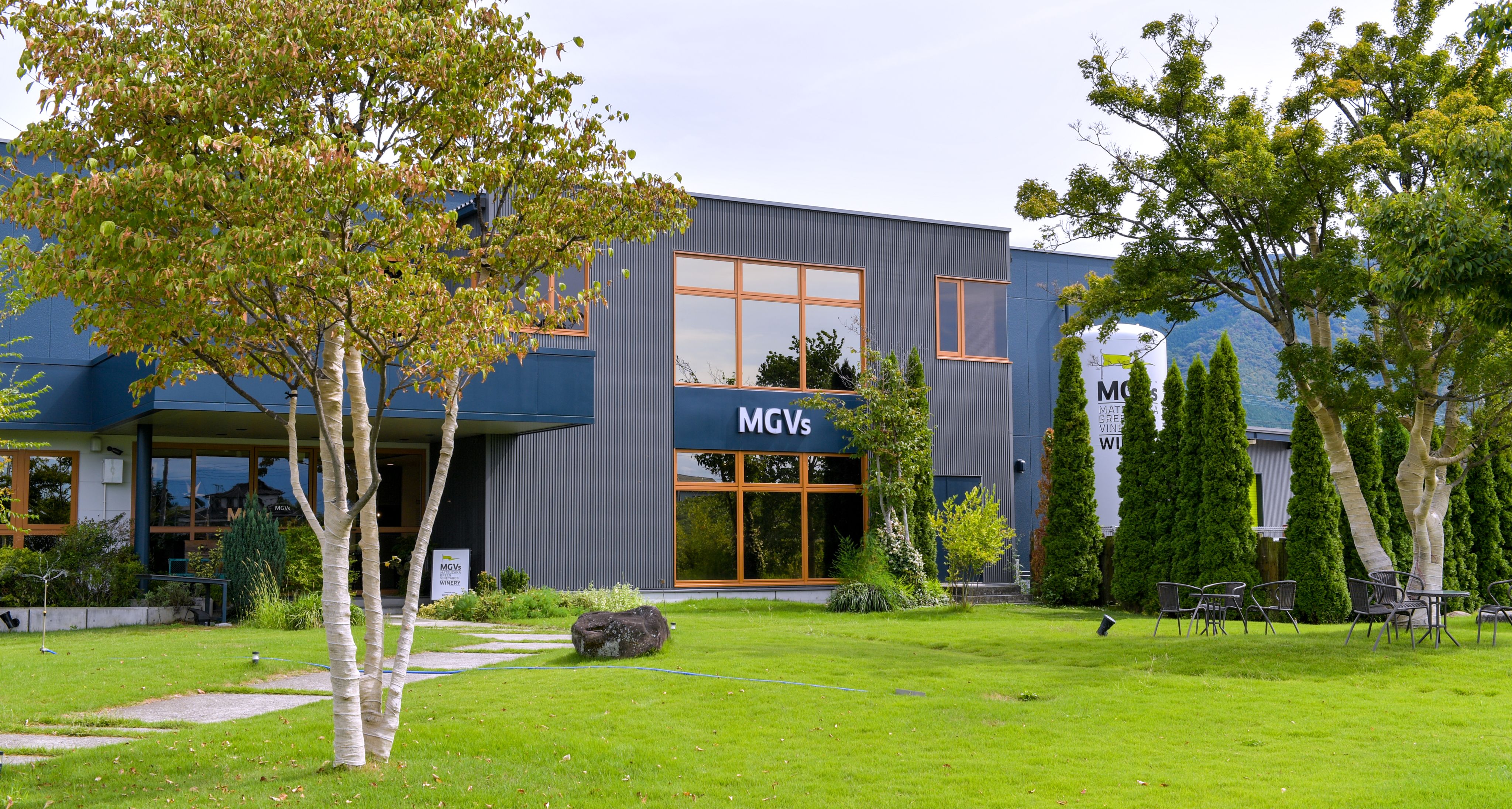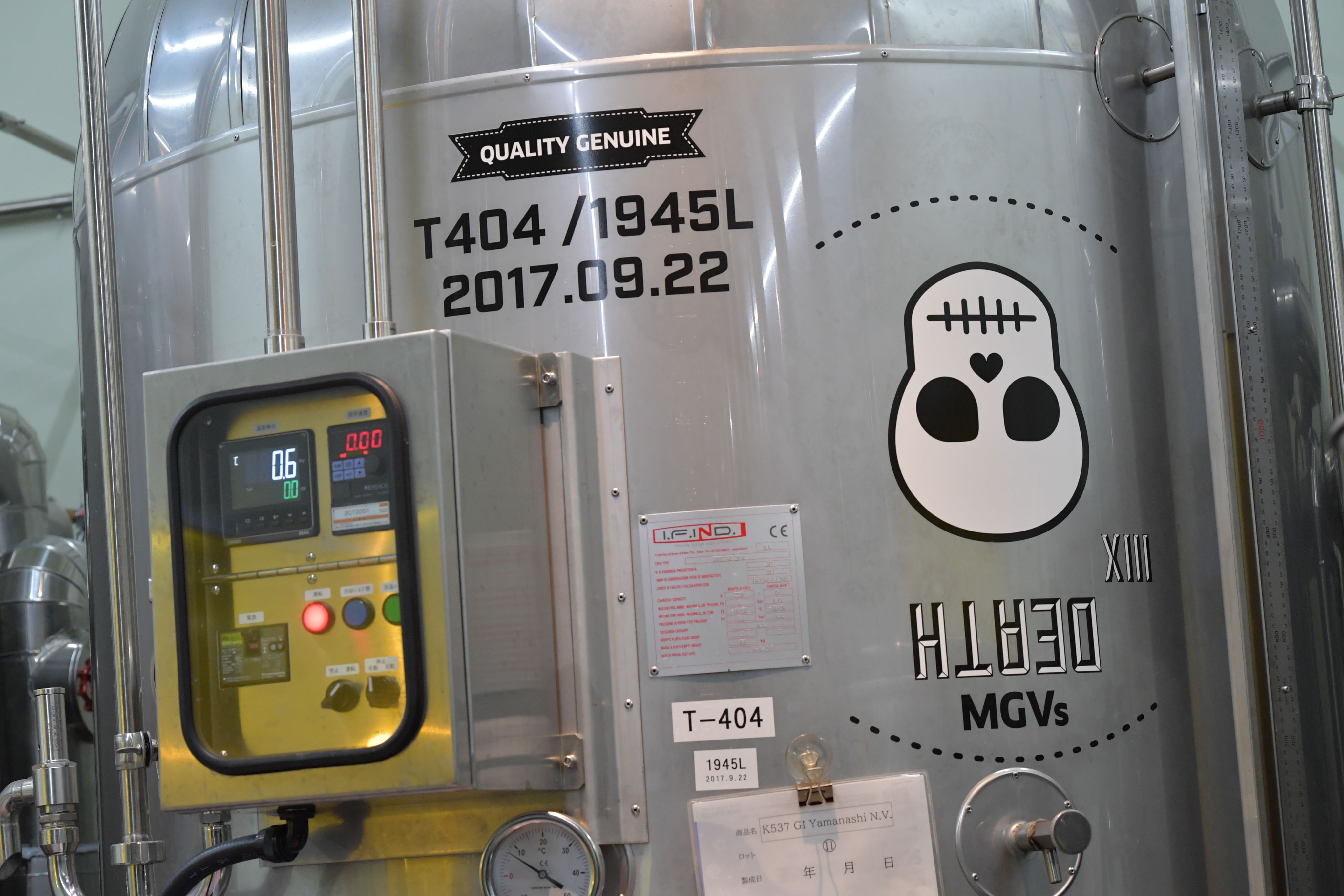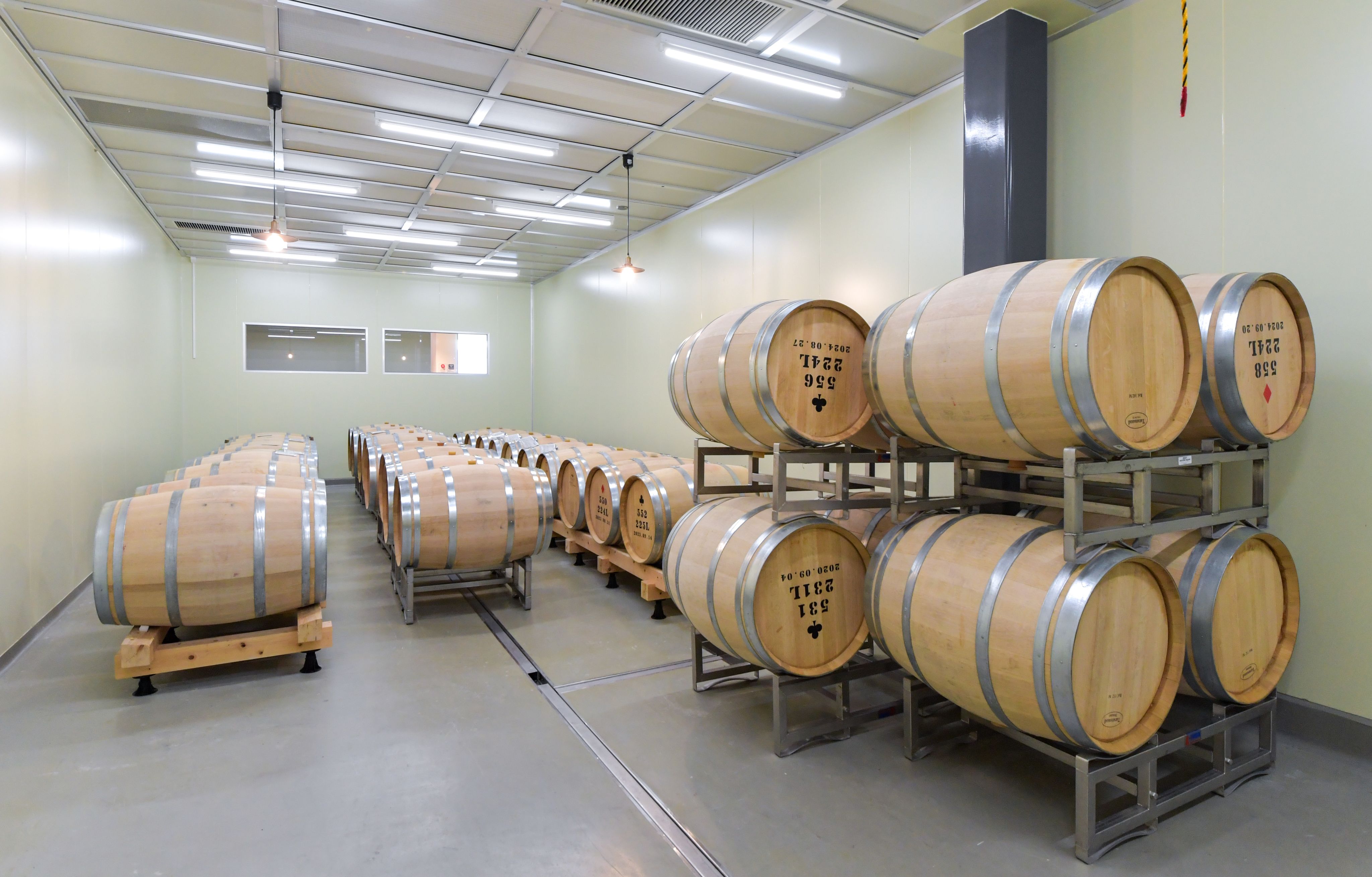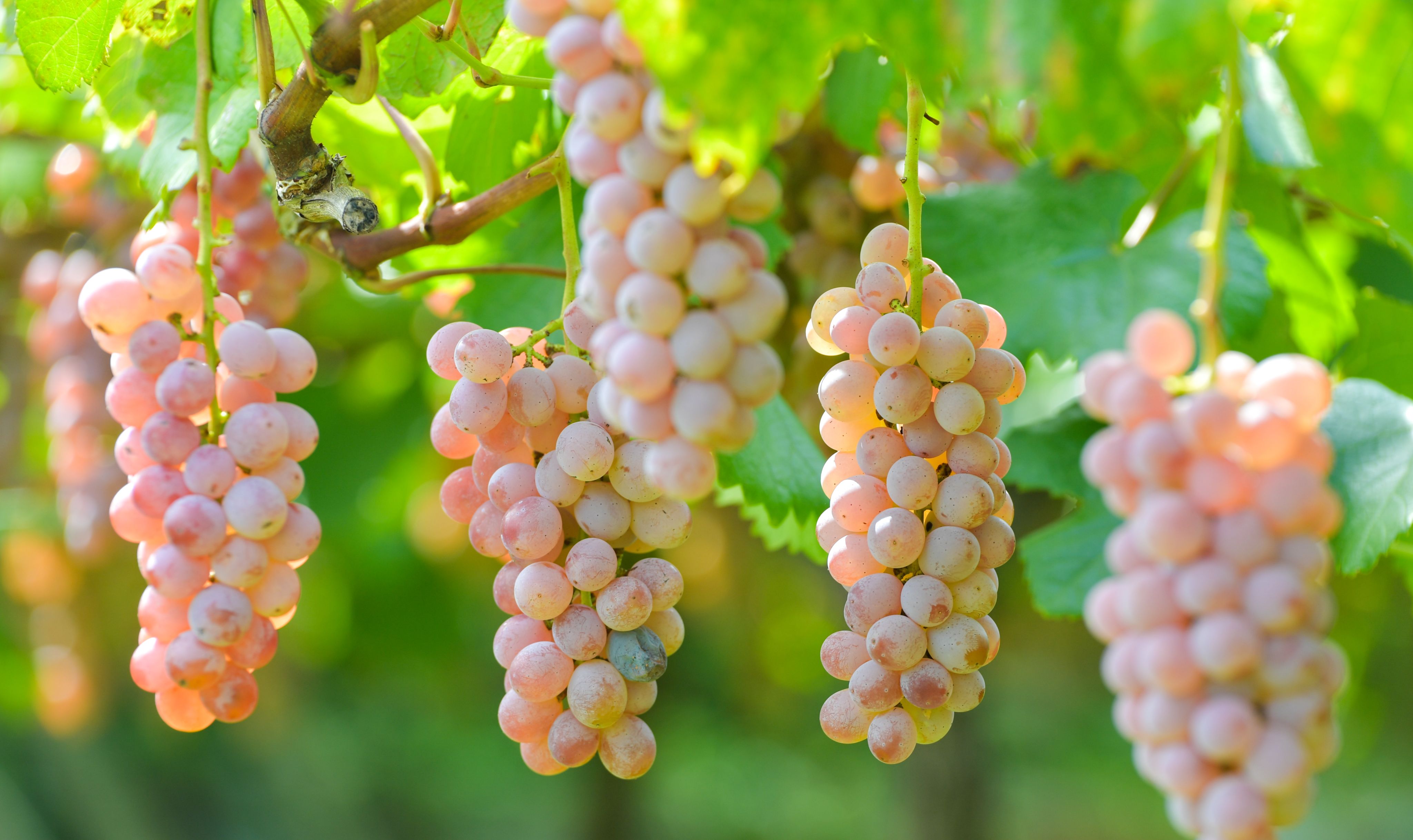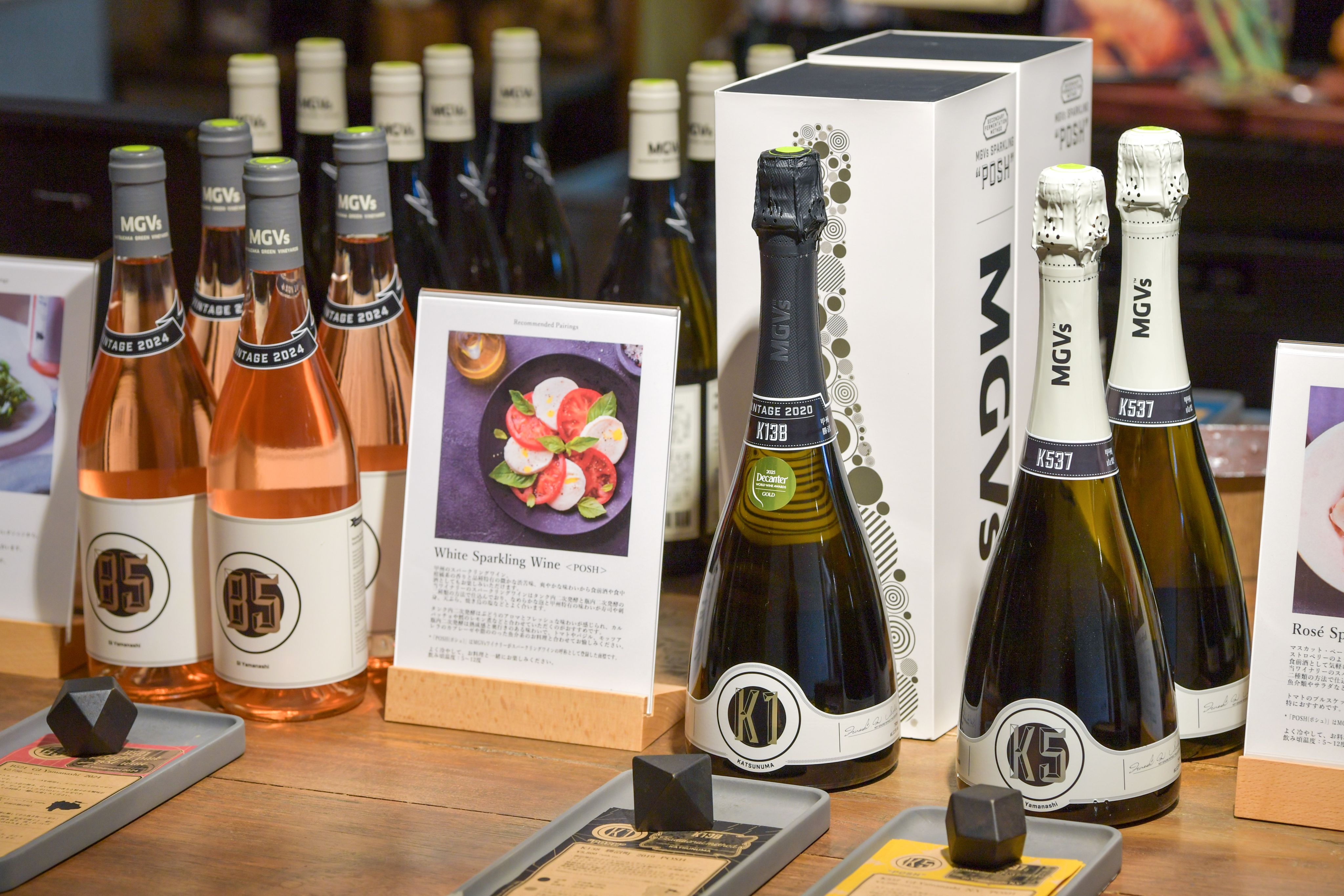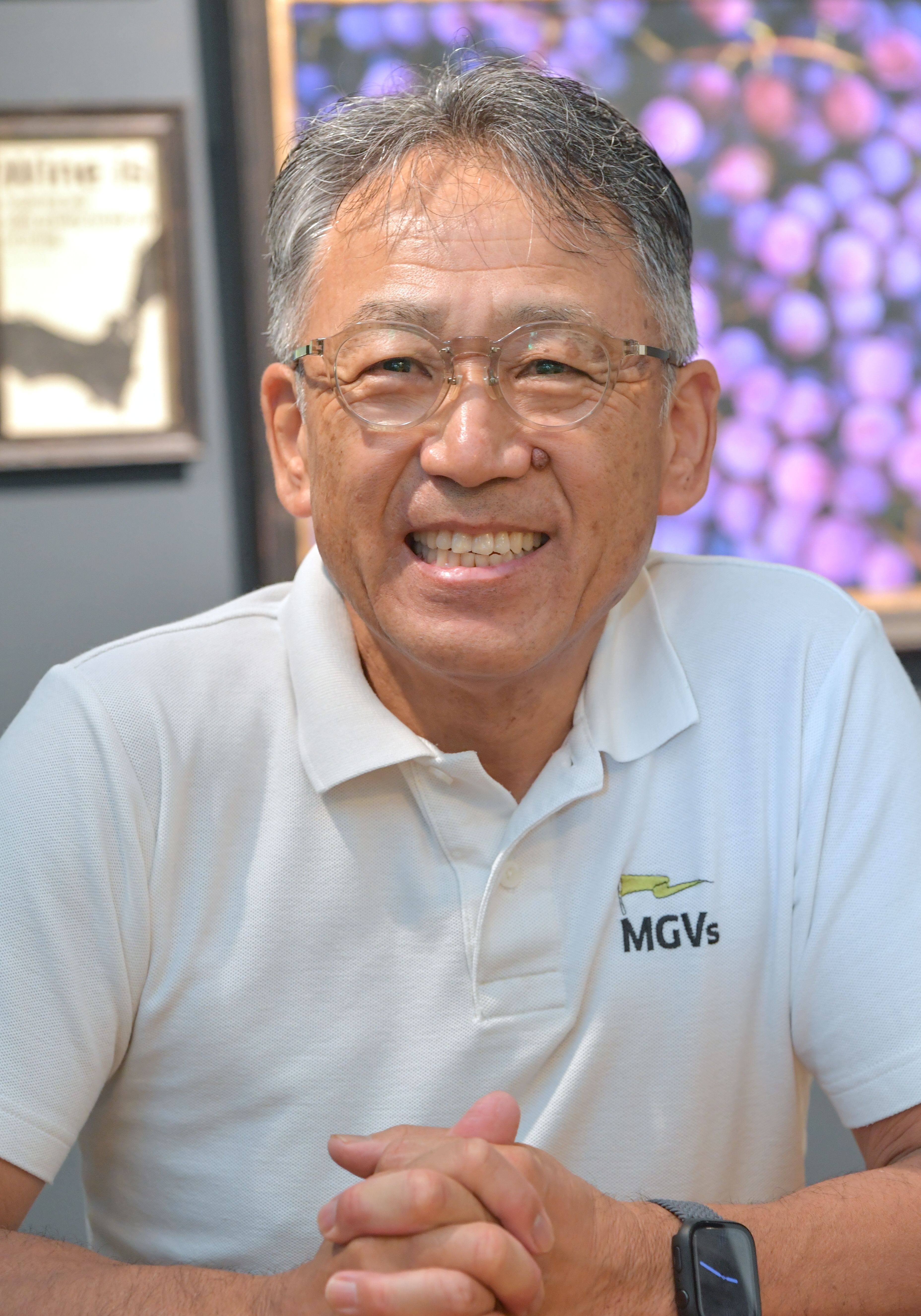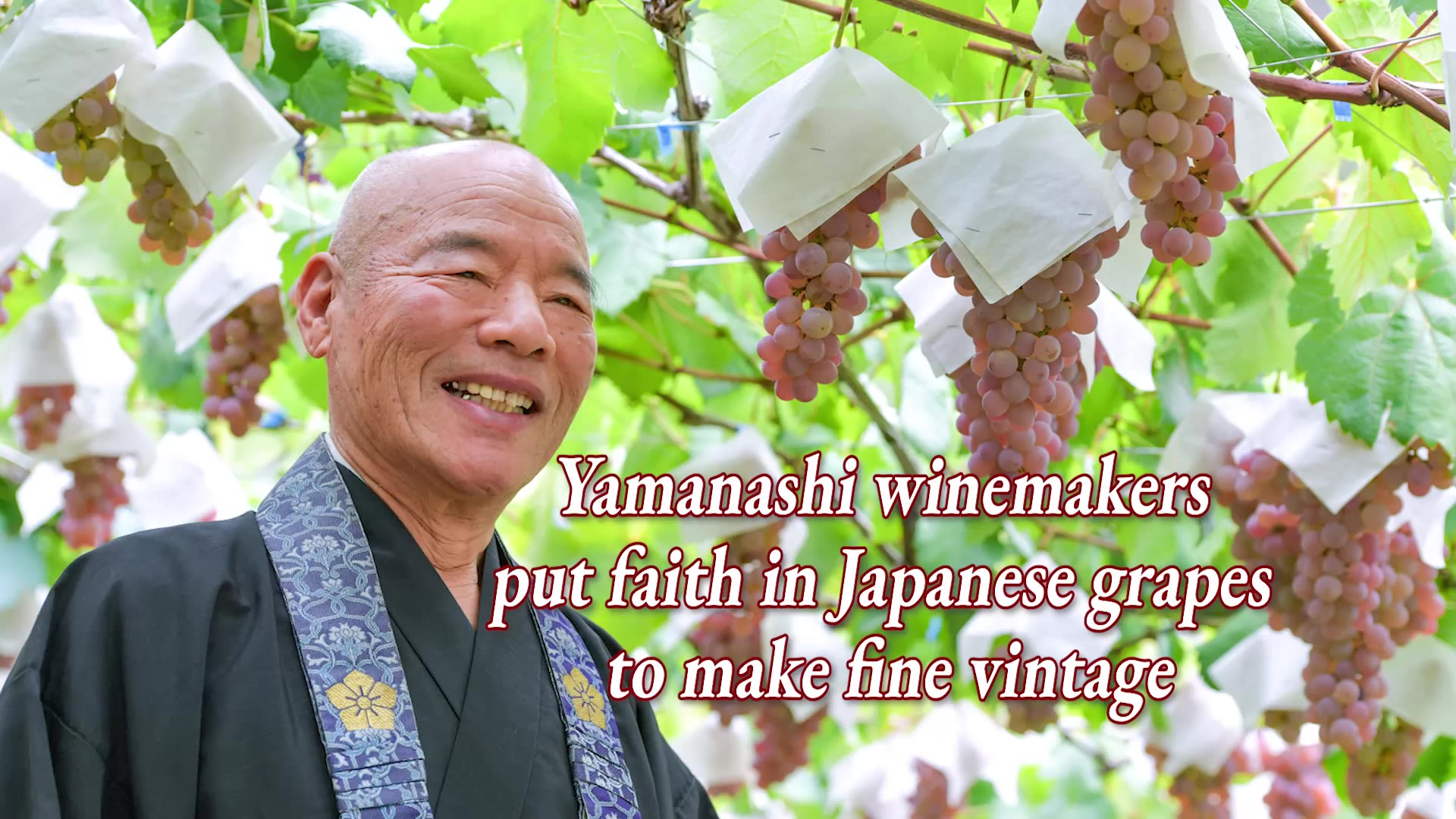
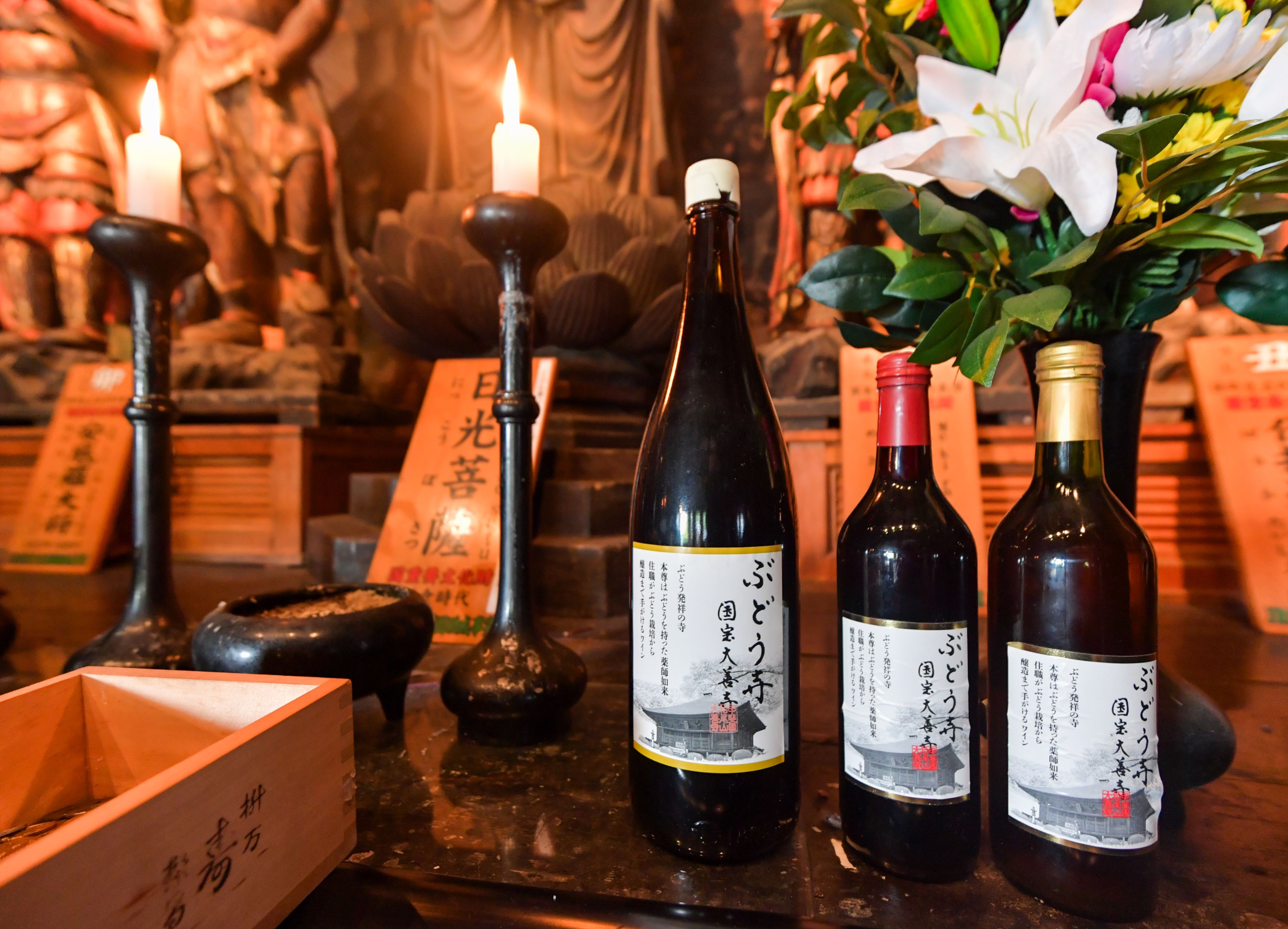
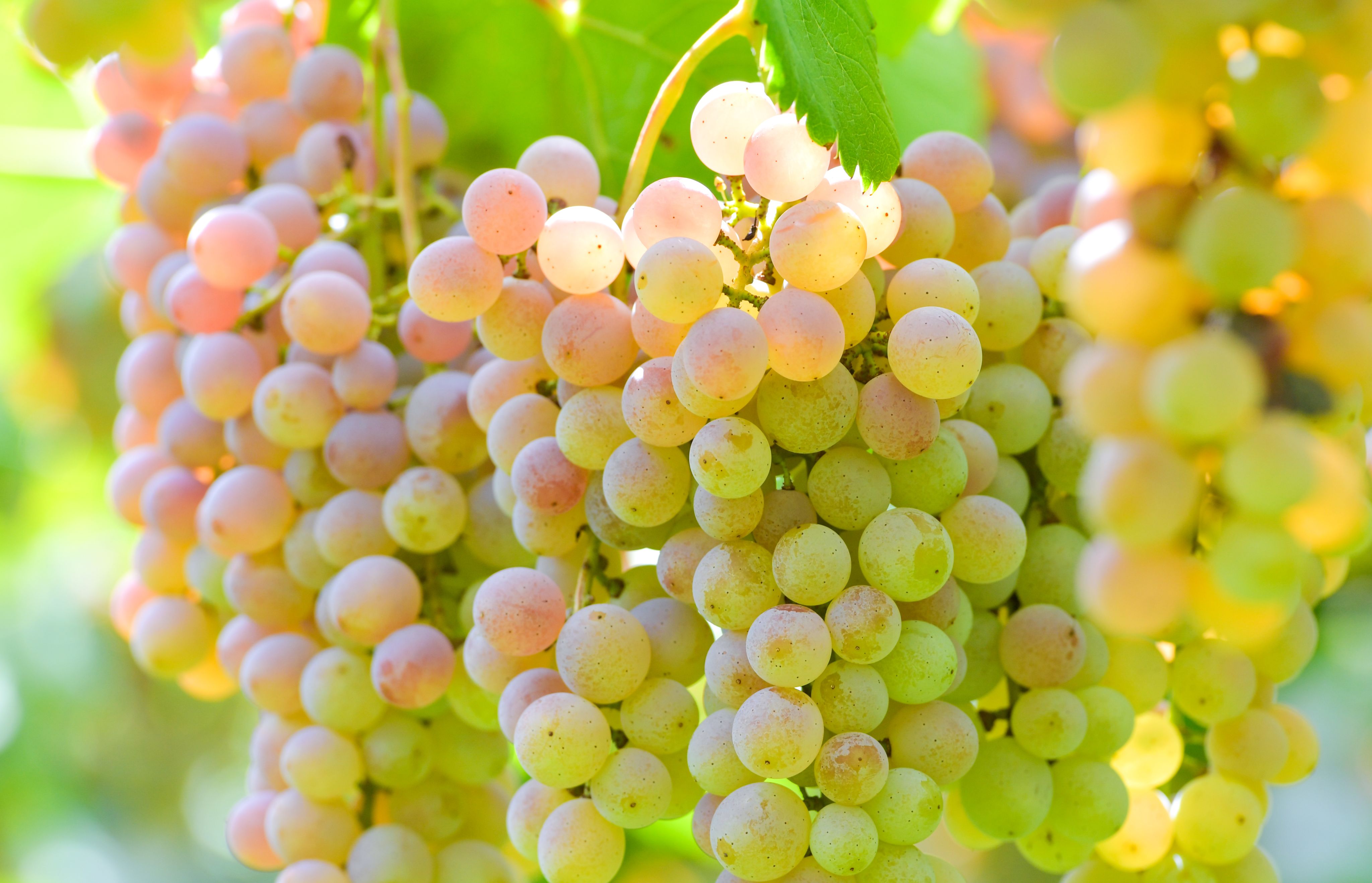
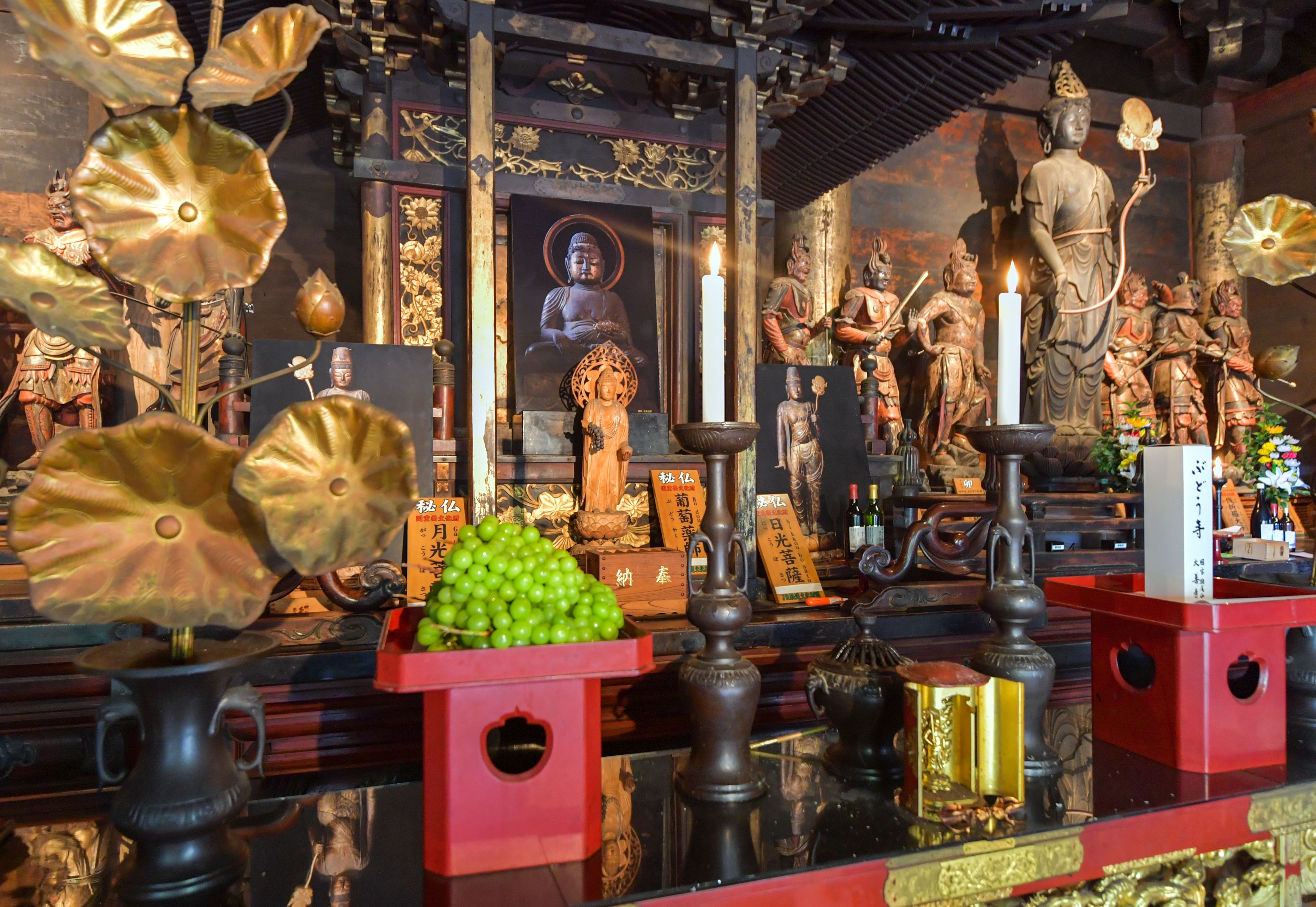
Faith in Japanese grapes and the local terroir to produce competitive wines is strong among winemakers in central Japan’s Yamanashi Prefecture, where even a local temple makes its own tipple.
Seen from the upper reaches of Daizenji temple’s stone stairway, climbing the hillside to the main hall, a patchwork landscape of vineyards unfolds across the Koshu Valley below.
Koshu is at the heart of winemaking in Yamanashi Prefecture, Japan’s largest producer of the beverage. Around 90 wineries in the prefecture produced around one third of Japan’s wine in FY2023, according to National Tax Agency data.
©️Daizenji
©️Daizenji
Daizenji credits its founder, a Nara-era priest, with establishing grape cultivation in Koshu’s Katsunuma district around 1,300 years ago. According to the temple, the priest had a vision of the temple’s main image, the healing Buddha Yakushi Nyorai, holding a bunch of grapes. Daizenji has since cultivated the moniker, “grape temple.”
Teshu Inoue, Daizenji’s chief priest, heads a cooperative through which parishioners produce wines using grapes grown on the temple grounds. “In a sense, we make wine using the Buddha’s grapes, on its behalf,” Inoue, 78, said.
Daizenji produces around 2,000 bottles of wine a year. New batches from the cellar attract regular customers, says Inoue, who thinks their loyalty comes from the wine’s key ingredient. “It’s mostly blessings from the temple,” he said. “The blessings account for 80 percent. The taste, 20 percent.”
The key ingredient in much of the wine produced in Yamanashi Prefecture is Japan’s original wine grape, the Koshu.
By volume, the white-wine grape accounted for 57.9 percent of grapes used as a raw ingredient for wine in Yamanashi Prefecture in FY2023, according to a National Tax Agency survey.
Japan’s other wine grape, the red-producing Muscat Bailey A, accounted for 22.0 percent.
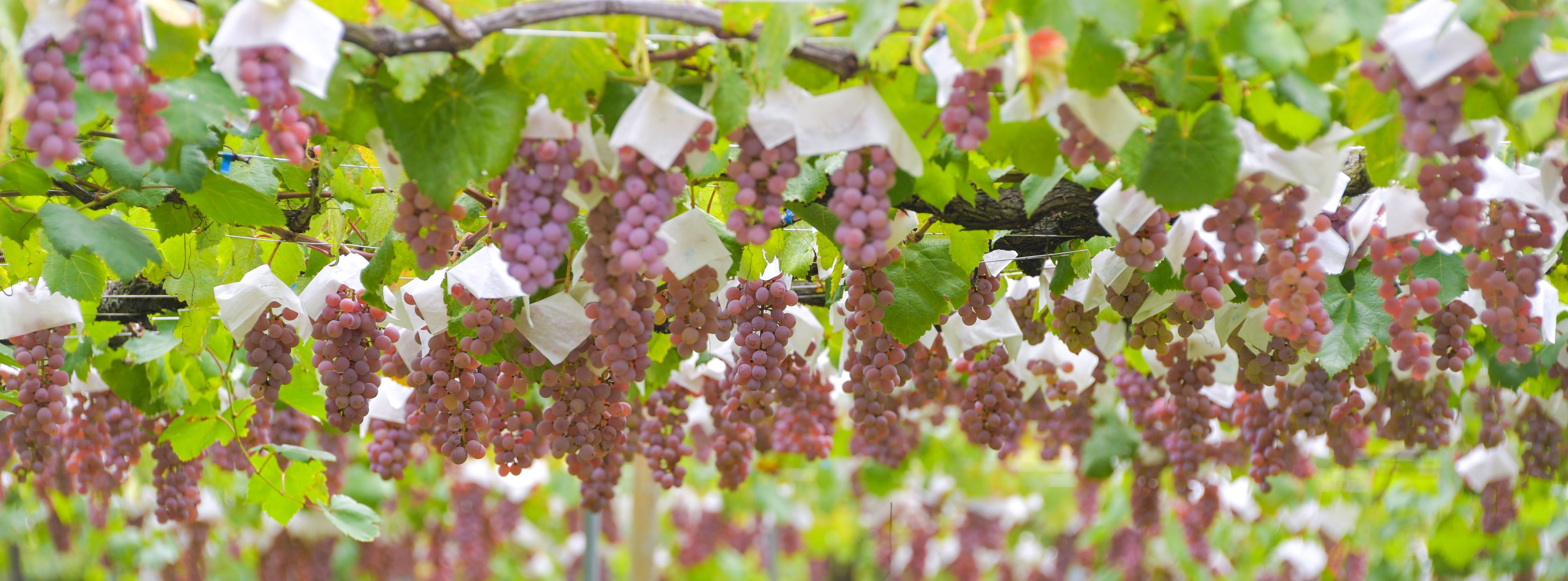
At one of his vineyards in Katsunuma, Hirotaka Aruga squats to inspect the Koshu grapes hanging from a trellis. Each bunch is topped with a distinctive “kasa,” an umbrella-like cover to prevent the grapes from spoiling. It is mid-September, and the grapes are light pink in color. He says they are ready to be picked.
Aruga is the fourth head of his family’s winery, Katsunuma Jozo Co. Established in 1937, the winery produces around 350,000 bottles a year (500,000 including non-alcoholic juice), making it one of the larger operations in the region.
Aruga’s father had seen French grape varieties, including Chardonnay, Merlot, and Cabernet Sauvignon, as the best way to produce world-class wines. The 43-year-old, however, believes it better for the winery to embrace Japanese varieties like the Koshu.
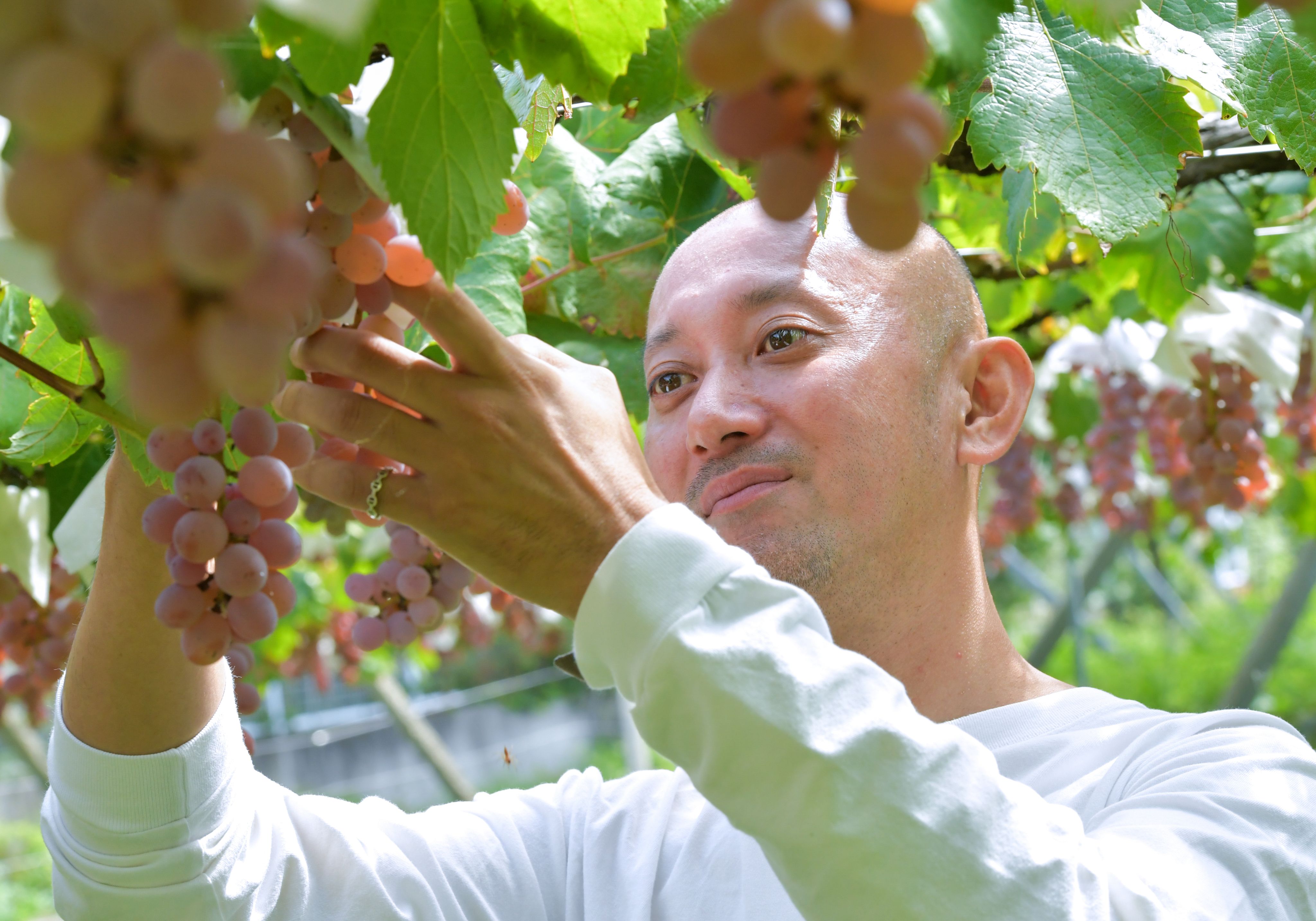
Aruga sees strength in the light quality of the resulting wines, including the winery’s Aruga Branca brand. He says it makes them great for pairing with food, particularly traditional Japanese cuisine.
“The wines don’t get in the way of the flavors. They share that characteristic with Japanese people, who can get on with anyone,” he said.
The light wines belie the resilience of the Koshu grape. As soaring summer temperatures trouble winemakers across the globe, Aruga thinks Koshu grapes will be least affected, having been around for 1,300 years.
While he has been impressed with the early results of a more resilient grape variety in development by Yamanashi Prefecture, Aruga sees his priority elsewhere.
“Wine is not yet part of the culture in Japan. My most important role is to help people understand that it is something they can really enjoy. To have them experience wine for themselves.”
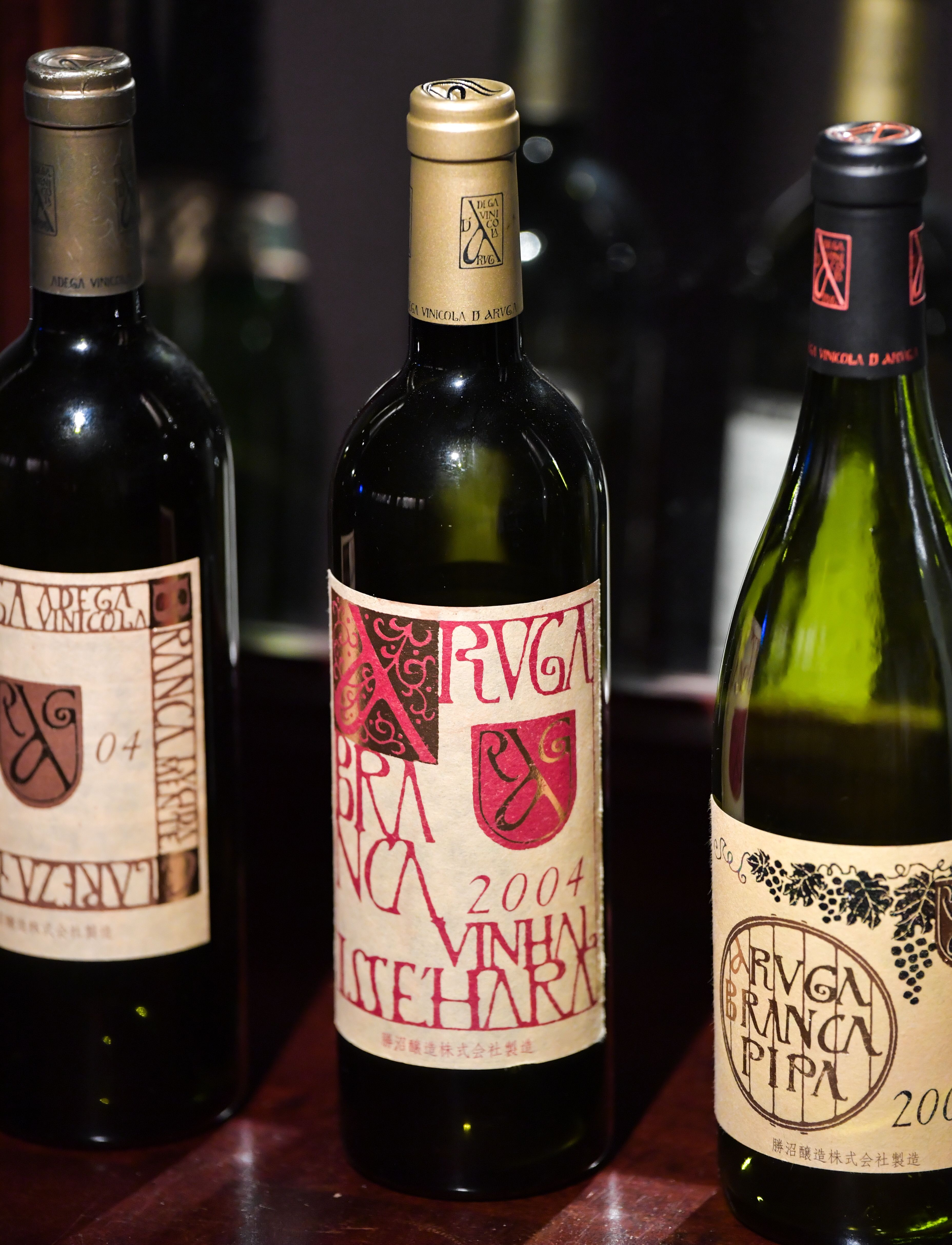

That experience could be on one of Katsunuma Jozo’s winery tours or during a wine and music night. At the winery shop, housed in a 19th century merchant home, visitors can taste wines from machine servers or enjoy a glass on the terrace overlooking the vineyards.
©Restaurante Kaze
©Restaurante Kaze
At the winery’s Restaurante Kaze, Katsunuma Jozo highlights pairings, including the barrel-aged Koshu Aruga Branca Pipa paired with Japanese black beef wagyu steak.
With fewer Japanese people consuming alcohol, Aruga says direct appeals to those who do enjoy a drink are no longer enough. He wants visitors to the winery to come away from the region impressed by its buildings, people, and culture.
“If we can attract visitors who are tuned into these things, maybe wine will find its way into their lifestyle, too,” he said.
When Hiroshi Matsuzaka moved production of his semiconductor plant in Katsunuma to Vietnam, he started to think more locally about how it could be repurposed. In 2017, the plant reopened as MGVs Winery.
“We wanted to find value in something unique to this place. That is where wine came in,” Matsuzaka said.
Matsuzaka, 67, still heads Enzan Factory Co., the semiconductor manufacturer and owner of MGVs Winery. But through the winery, he can distract himself from fluctuating chip demand and fierce competition from tech rivals in Asia.
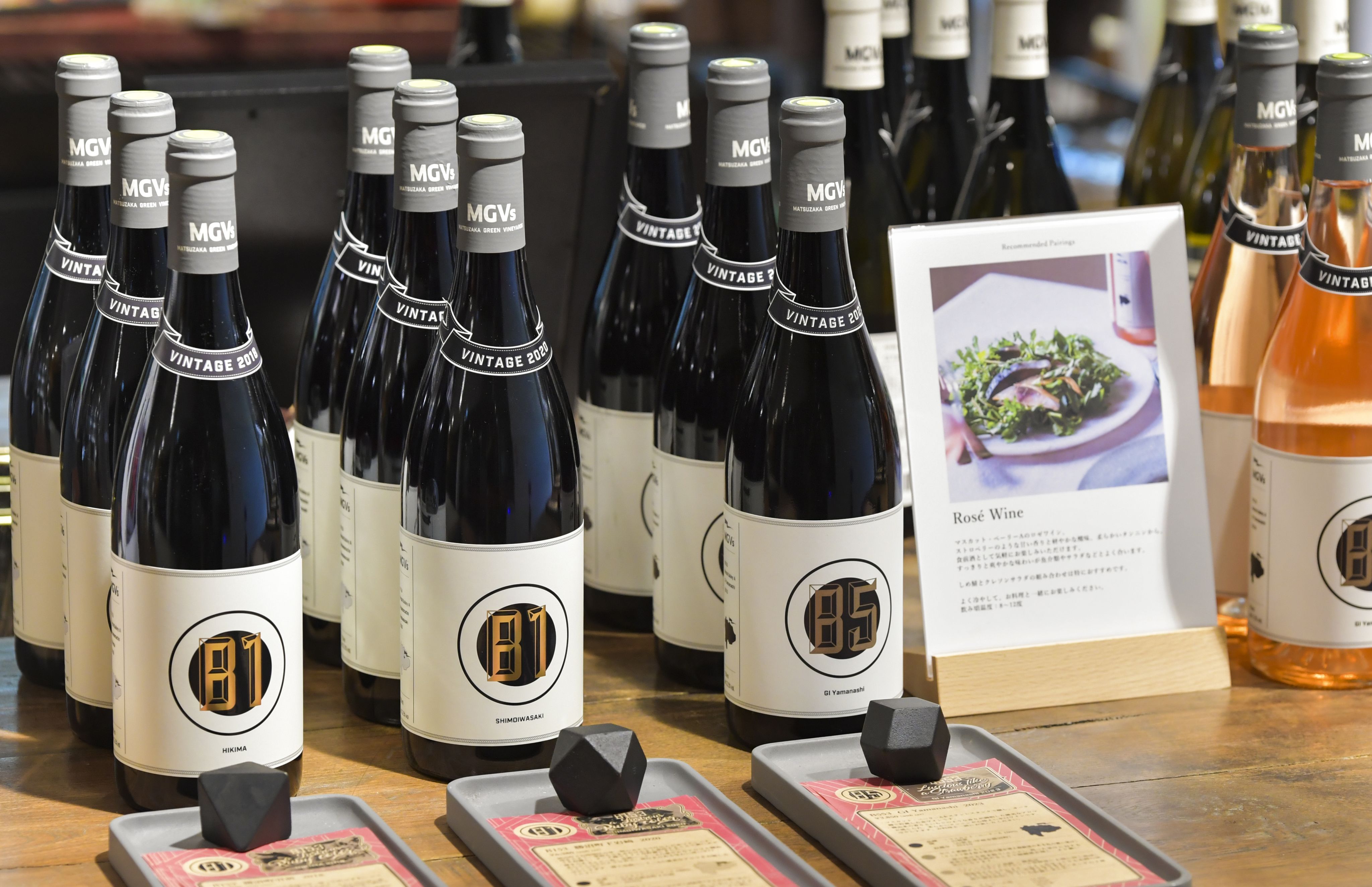
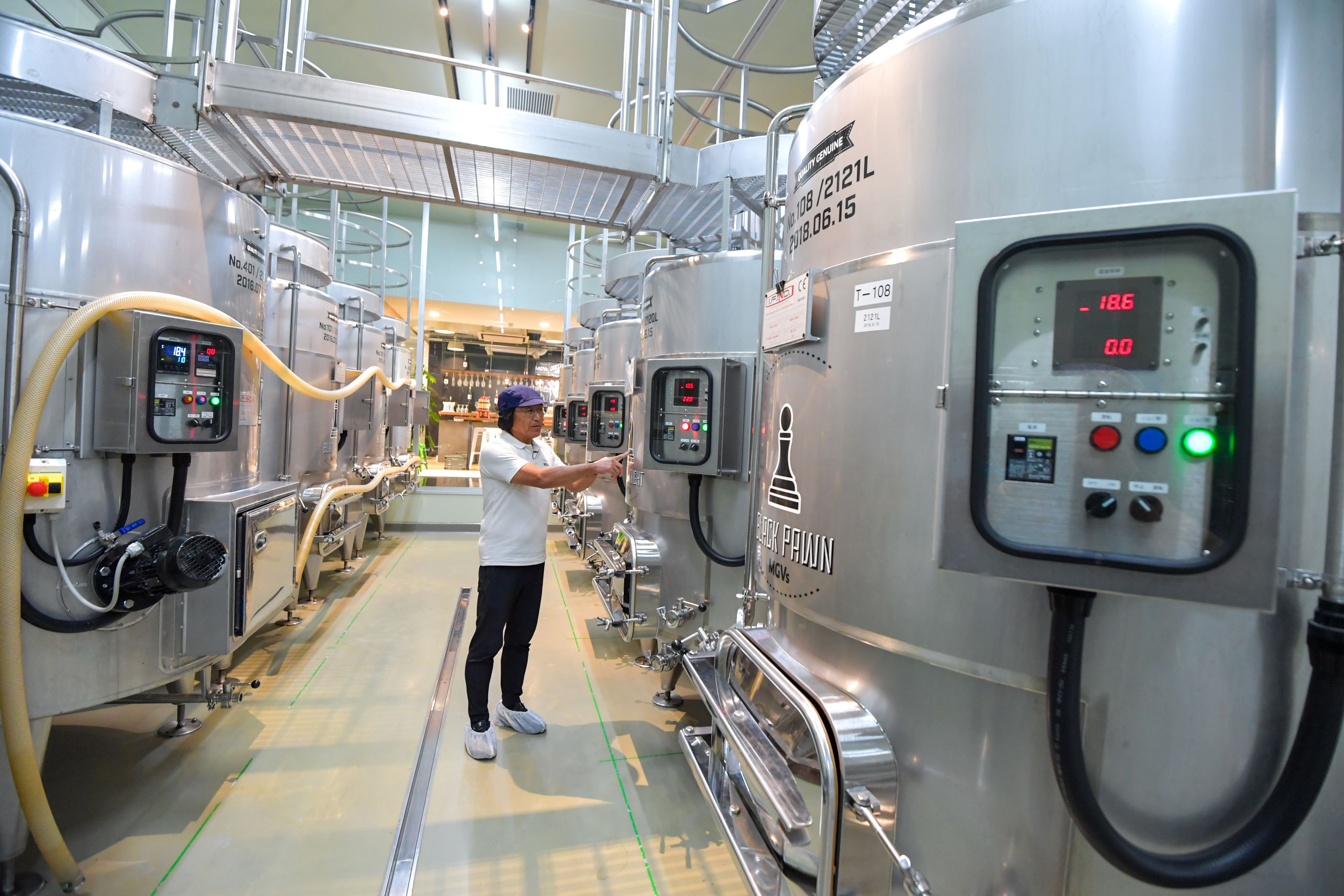
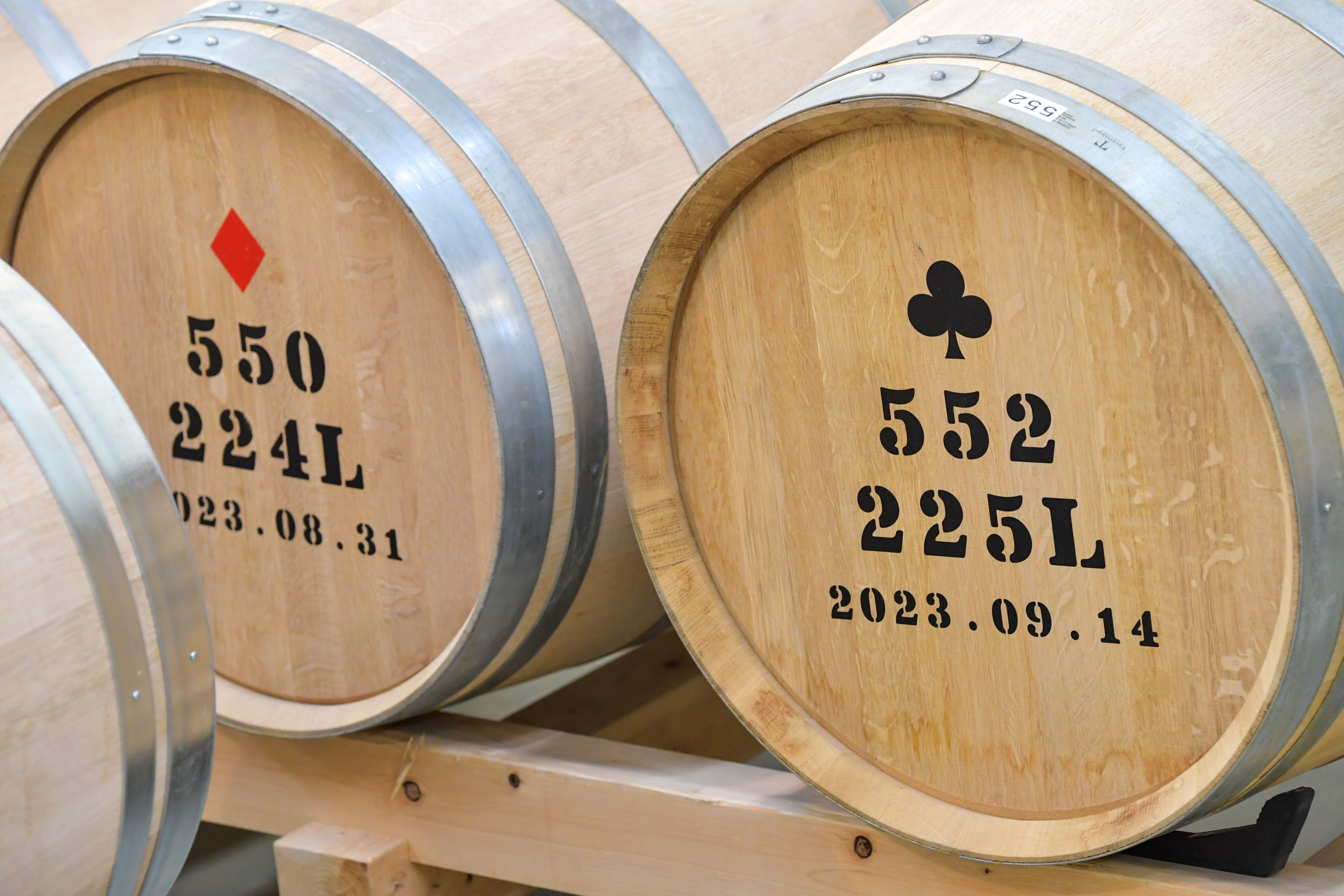
Matsuzaka, though, still applies experience in semiconductor manufacturing to winemaking. “Semiconductor manufacturing and winemaking share the same foundation,” he said. “What matters most is how well you control the production process.”
The former-plant clean room, designed to keep out dust and contaminants, now prevents bacteria from spoiling the wine and keeps the temperature of the wines stable. Liquid nitrogen gas, previously used to protect silicon wafers from oxygen and moisture, prevents grape juice from deteriorating.
Visitors will also find former-plant fixtures and fittings used as a feature of the modern winery store. From the tasting counter, they can view the tank room and bottling room through large glass windows.
On land around the riverside winery that has been in his family for four generations, Matsuzaka focuses on fine tuning the cultivation of Koshu and Muscat Bailey A grapes -- the only grapes used by the winery.
Vineyard-by-vineyard, even vine-by-vine, Matsuzaka aims to produce wines that best express the terroir -- the relationship between wine and the environment in which it is produced.
It is a work in progress but one that is already producing international award-winning wines like the sparkling K138 Katsunuma Posh Koshu.
Matsuzaka says other Katsunuma winemakers have started pursuing vinification by the vineyard, rather than combining grapes from a wider area. He sees it as a positive step, allowing the wineries to strengthen their identity and that of the Katsunuma region.
“Pursuing winemaking like this means we won't lose out to competition overseas, like we have experienced with semiconductors,” he said. “Instead, we can focus on creating something unique to us.”
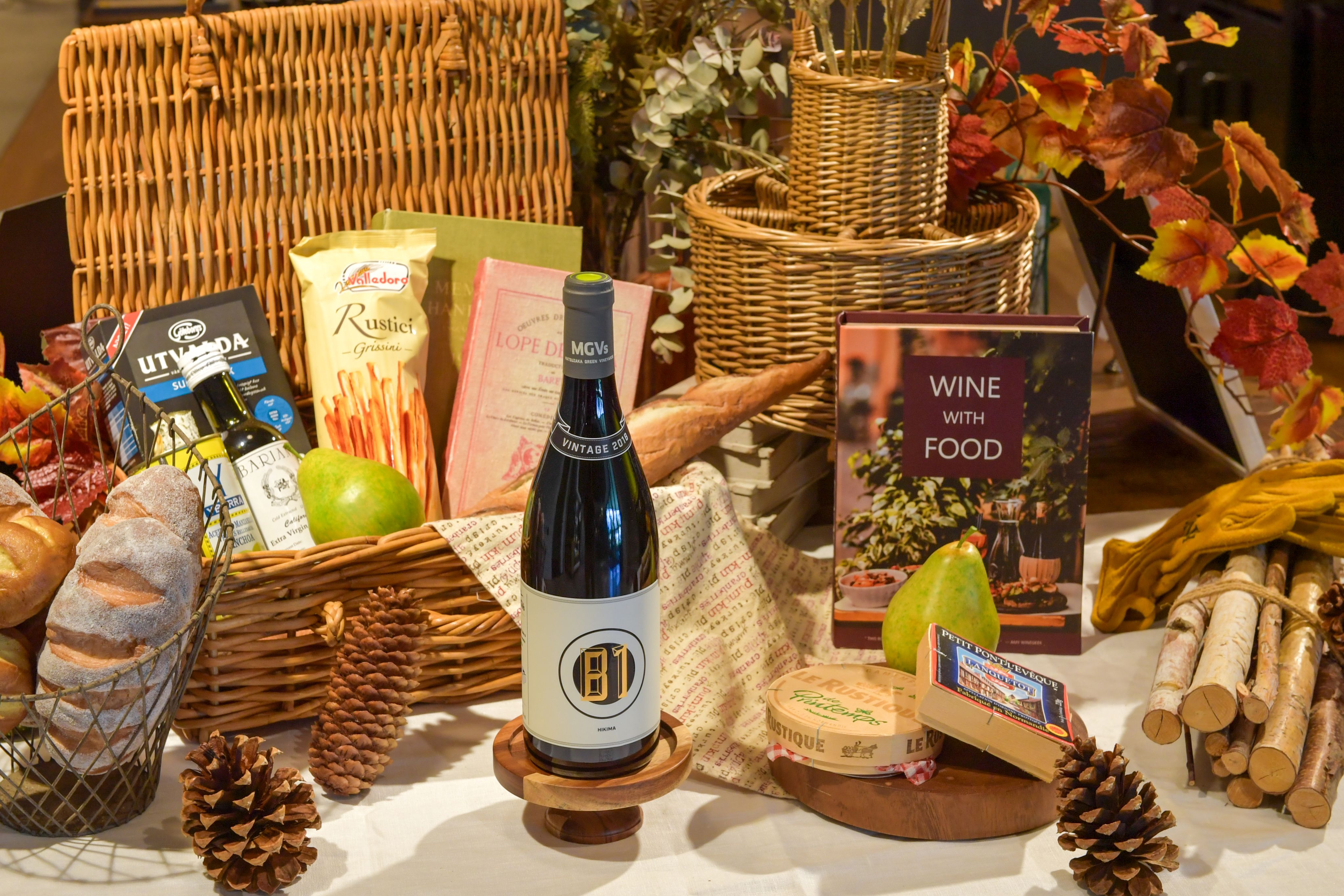
Text : Tom Shuttleworth
Photo : Yuki Murayama
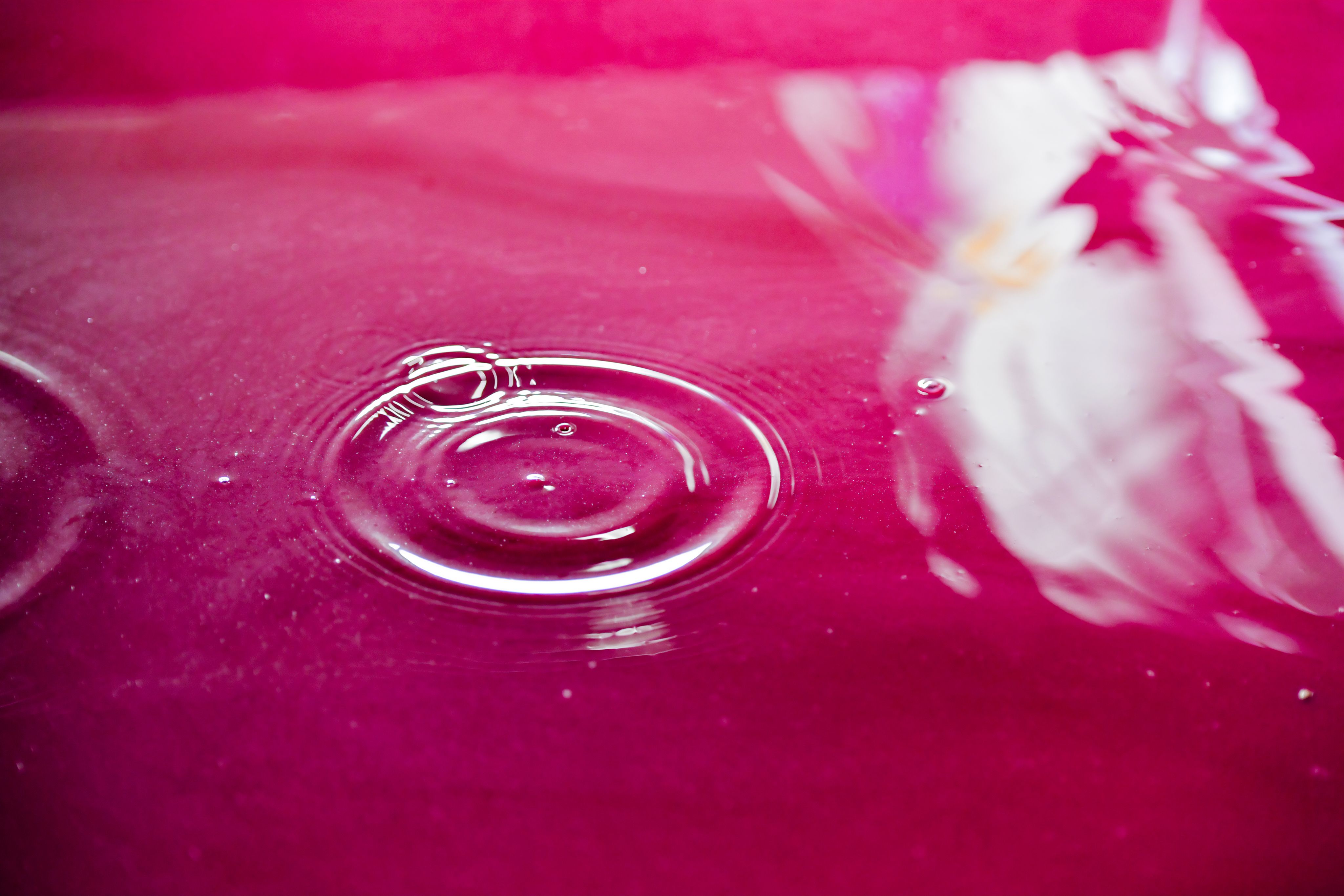
Other Spotlight Japan Stories
Rising bear attacks prompt new shooting rules, but hunters dwindle
Japan's surge in bear attacks has forced the government to relax rules on "emergency shootings" in populated areas, amid concerns over whether municipalities can secure hunters skilled enough to respond without putting residents at risk.
Narita's holdouts fight for a future beneath the flight path
Resembling shark fins poking above the waterline, the tails of taxiing airplanes are just visible over the tall white fence that separates Kinone Pension from the runways of Narita airport.
Japanese underground idol culture booming in China
At a club in Shanghai, dozens of young people jump and wave glow sticks as they dance to the music. They're Chinese amateur girl groups singing in Japanese, and this is Japan's globalized idol culture.
Discarded chemical weapons materials from war torment residents over time
At the beginning of 2002, unusual symptoms appeared in Ryuji, a 6-month-old boy living in a small town in Ibaraki Prefecture north of Tokyo. The infant could not sit up or eat properly. With a high fever and trembling hands, he was diagnosed with an unknown cause of cerebral palsy.
The Company uses Google Analytics, an access analysis tool provided by Google. Google Analytics uses cookies to track use of the Service. (Client ID / IP address / Viewing page URL / Referrer / Device type / Operating system / Browser type / Language /Screen resolution) Users can prevent Google Analytics, as used by the Company, from tracking their use of the Service by downloading and installing the Google Analytics opt-out add-on provided by Google, and changing the add-on settings on their browser. (https://tools.google.com/dlpage/gaoptout) For more information about how Google handles collected data: Google Analytics Terms of Service (https://policies.google.com/technologies/cookies?hl=en#types-of-cookies) Google Privacy & Terms(https://policies.google.com/privacy)
© Kyodo News. All Rights Reserved. No reproduction or republication without written permission.

